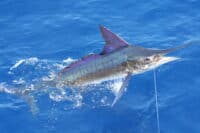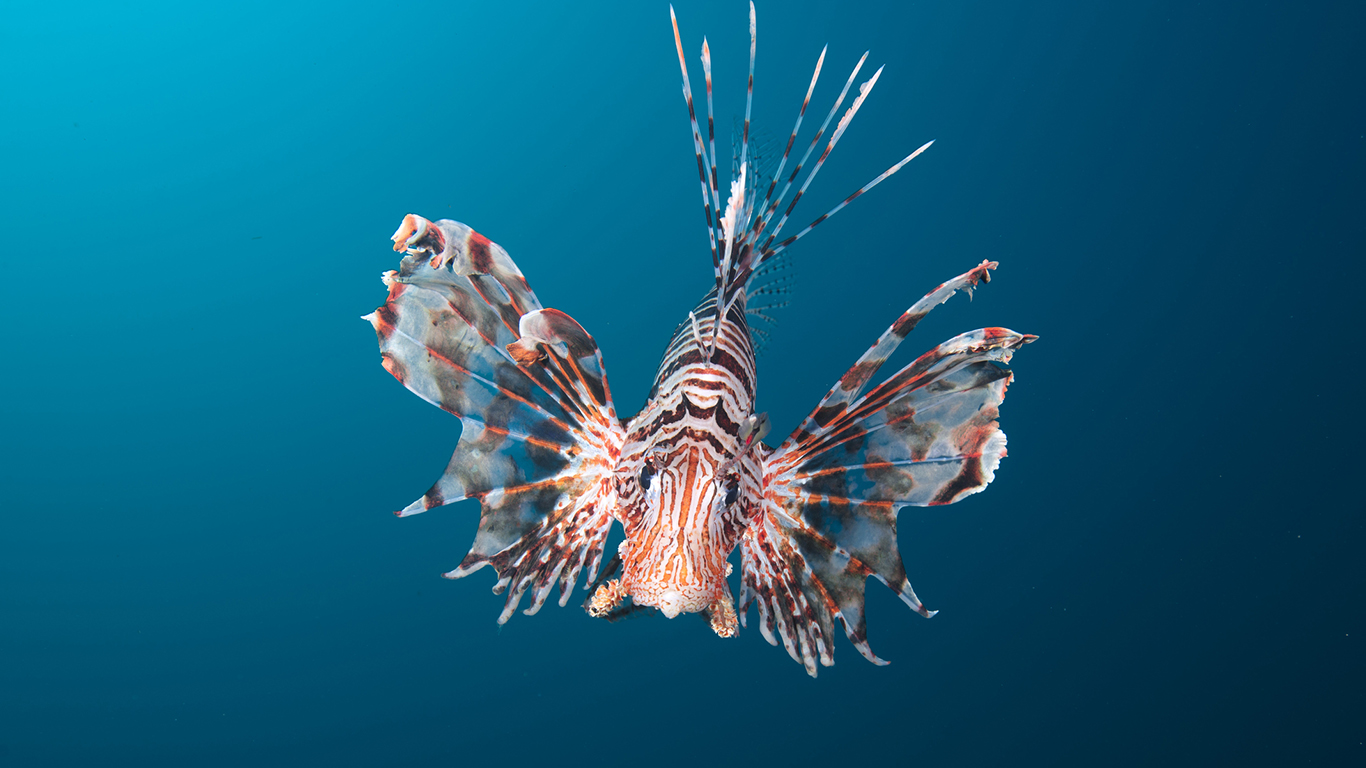
Invasive species are an expensive problem in the United States. Recent estimates show the devastation wrought by invasive species to crops, forests, wildlife, and homes costs the U.S. economy well over $100 billion annually.
According to the USDA’s National Invasive Species Information Center, an invasive species is an organism that is non-native to the ecosystem it currently resides in and causes — or is likely to cause — economic or environmental damage or negatively affect human health. An invasive species can be anything from an animal to a plant or a microbe.
To identify 30 of the most devastating invasive species, 24/7 Tempo reviewed 113 invasive species from the USDA’s National Invasive Species Information Center. We selected the species that pose the most significant threats to wildlife, the environment, and the U.S. economy.
Invasive species are one of the leading causes for the decline and even extinction of some animal populations. For example, more than 400 of the 1,300 some species currently protected under the Endangered Species Act are imperiled because of displacement or predation by invasive species, or because of competition with it.
The rusty crayfish is a perfect example of a species that is displacing the native crayfish species in the Midwest. Rusty crayfish also pose a threat to other aquatic life in the area. They graze on and eliminate aquatic plants as well as eggs of native fish populations.
All invasive species take a toll on the U.S. economy, whether it’s by direct damage or through the necessary management or eradication of the pests. The microbe known as Exotic Newcastle Disease, a pathogen that kills poultry, costs the U.S. a whopping $236 million to eradicate between both major outbreaks in U.S. history.
One the biggest economic hits are caused by non-native insects and pathogens that attack agriculture and other plant wildlife. An estimated $40 billion is spent every year in the U.S. to repair the damage these invasive species inflict on crops and forests. And this number is projected to rise.
Unfortunately, humans are mostly to blame for introducing these foreign invaders to the nation’s ecosystem. Many of these invasive species come to the U.S. by means of imported goods, wood, or plants, among other means.
Hundreds of billions of locusts are currently ravaging several countries all over the world, causing devastating damage to crops both in the field and in storage. Insect plagues have been documented throughout human history, causing famine and widespread hunger. These are the most devastating plagues in US history.
Click here to see 30 of the most devastating invasive species
To identify the most devastating invasive species, 24/7 Tempo reviewed the United States Department of Agriculture’s National Invasive Species Information Center. Invasive species are plants, animals, or other organisms such as microbes that are non-native to an ecosystem and cause economic or environmental damage or that are harmful to human health.
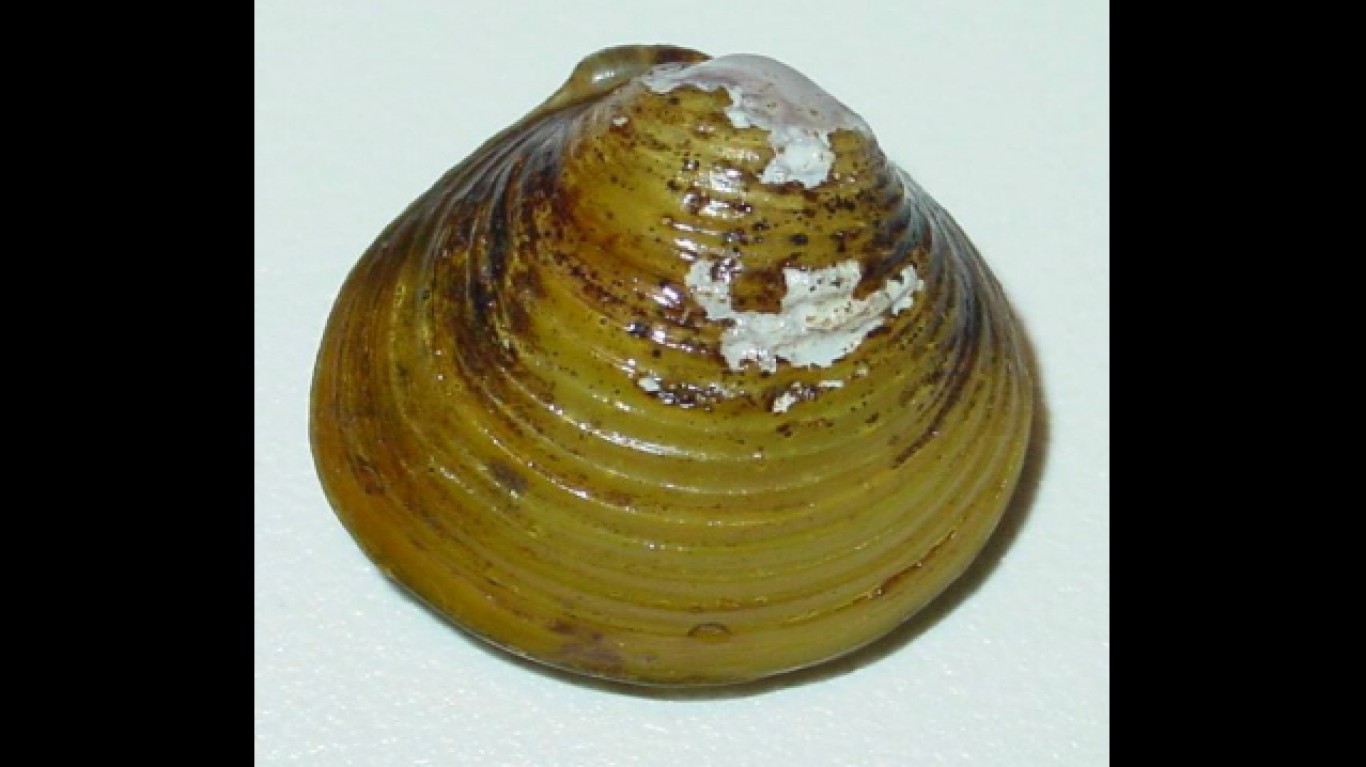
1. Asian Clam
> Scientific name: Corbicula fluminea
> Introduced to U.S.: 1938
> Native to: Asia, Africa, and Australia
The Asian clam was first discovered in the U.S. in 1938 in the Columbia River in Washington, having arrived either as an imported food source for the immigrating Chinese population, or by accident with the importation of the giant Pacific oyster. Today, the Asian clam is found in 44 states. While they appear small and harmless, they can clog water pipes, infiltrate water systems, and damage power plants. When they accumulate in beaches or lakes, they can cause environmental harm and impede tourism. They are estimated to cost the U.S. economy nearly $1 billion.
[in-text-ad]
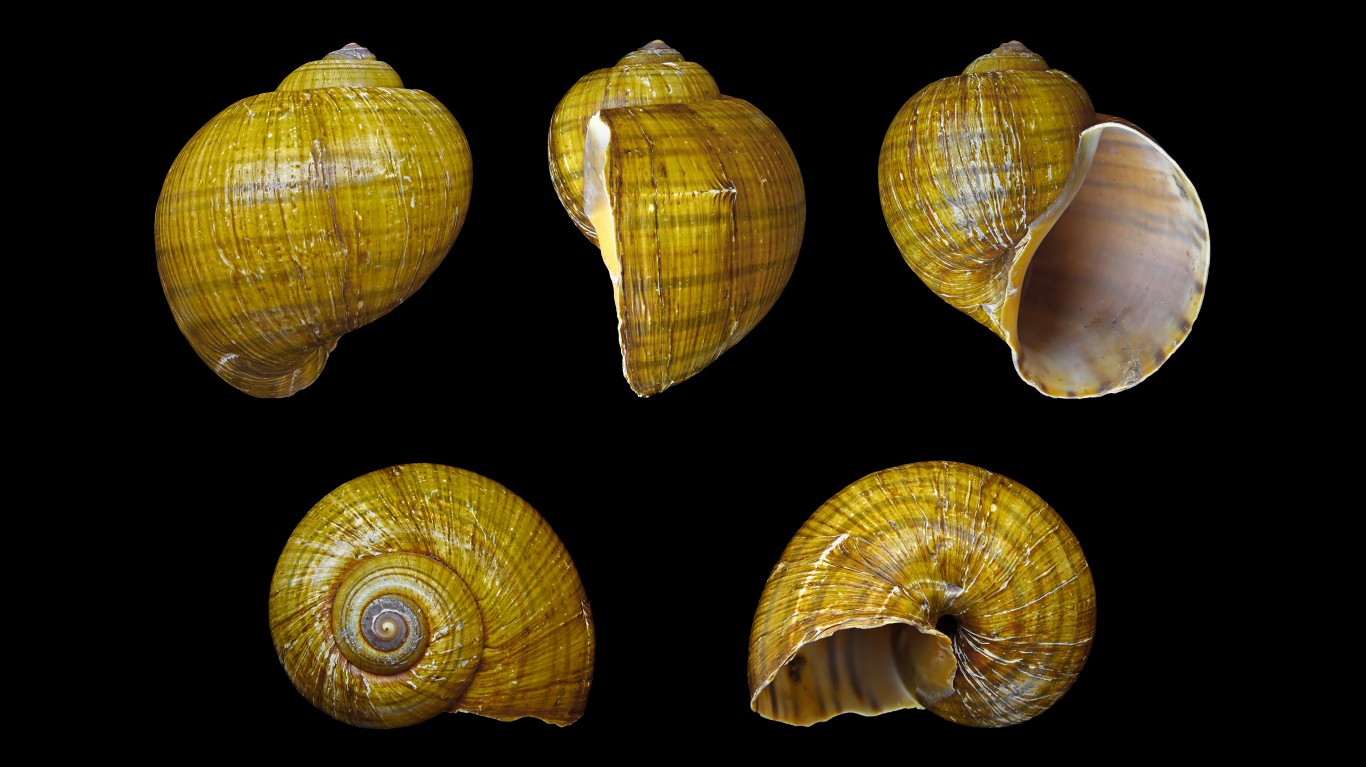
2. Channeled Apple Snail
> Scientific name: Pomacea canaliculata
> Introduced to U.S.: 1989
> Native to: South America
The channeled apple snail first came to the U.S. in 1989. These golden snails were legally imported to Hawaii, likely from the Philippines, to be developed as aquaculture for human consumption. Some of the snails either were released or escaped while being transported. The species has since spread, having popped up in California around 1997 and then in Arizona, northern Florida, Texas, and even Idaho. The channeled apple snail is a major agriculture pest, notorious for damaging rice crops, ultimately hindering production.
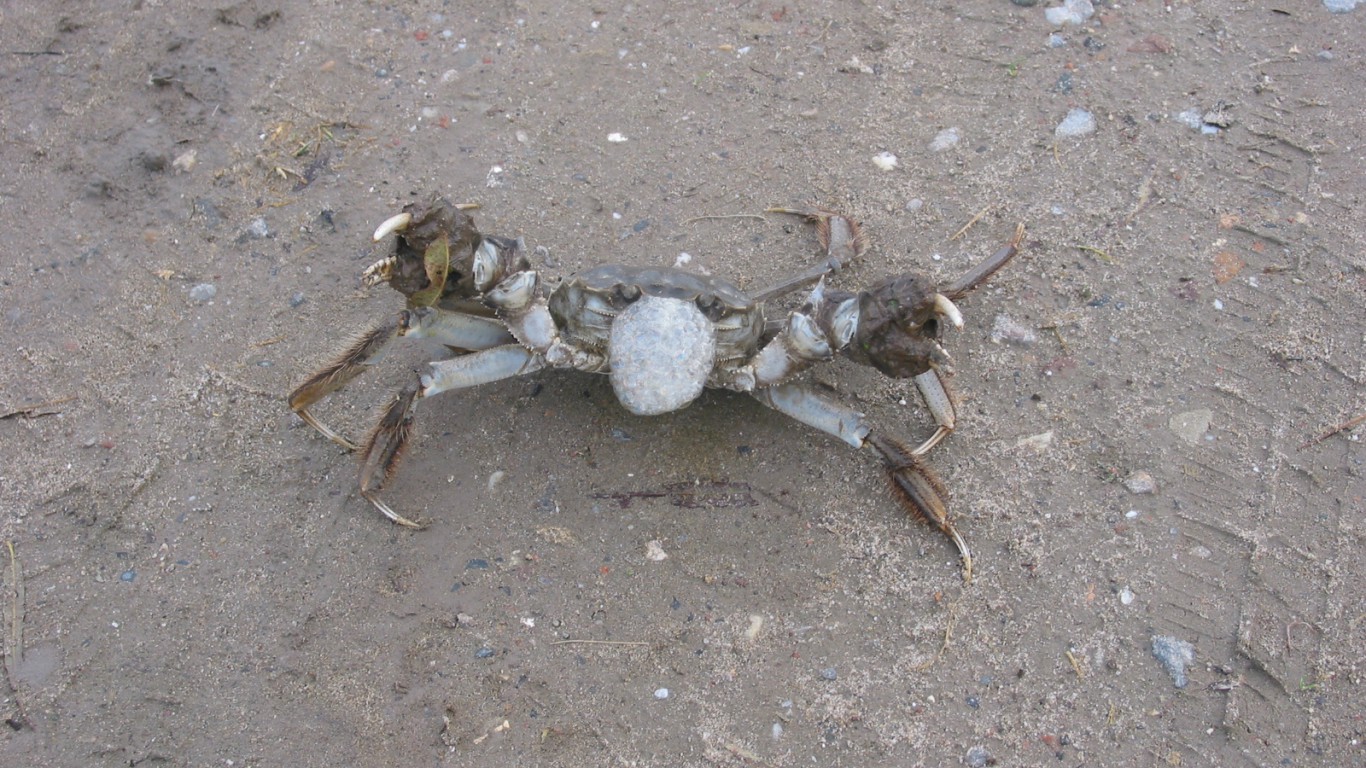
3. Chinese Mitten Crab
> Scientific name: Eriocheir sinensis
> Introduced to U.S.: 1992
> Native to: Pacific coast of China and Korea
The Chinese mitten crab appeared in San Francisco Bay in 1992 and then in the East Coast by the early 21st century. This pest invaded Germany in the early 1900s and proceeded to infiltrate rivers in northern Europe. The Chinese mitten crab likely made its way into the U.S. via ballast water, carried and released by ships to improve stability. This particular species poses a threat to both aquatic life and human health. The Chinese mitten crab is a known predator and competes with other organisms in its community. In addition, the crab is a host for the Oriental lung fluke, a parasitic worm that attacks the lungs and intestines in humans. The fluke can be transferred if the crab is consumed raw or not thoroughly cooked.
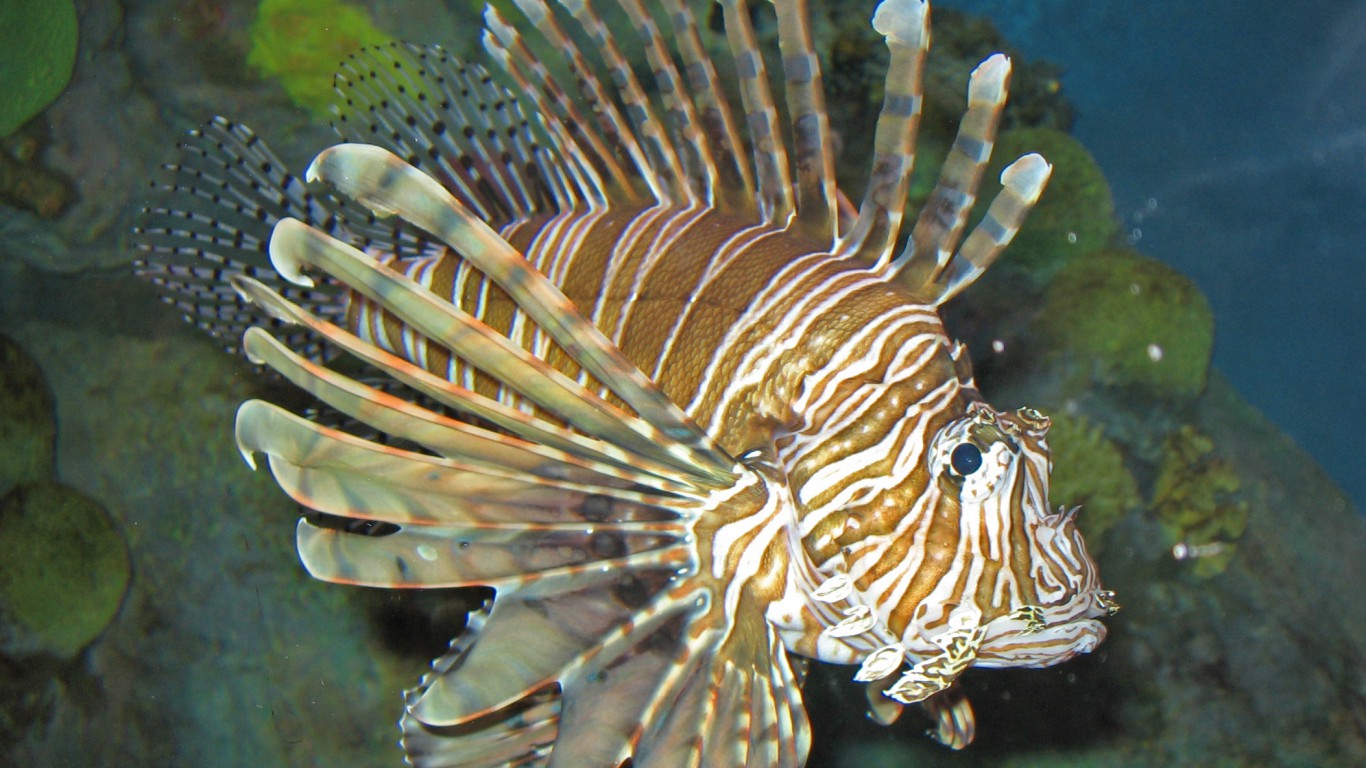
4. Lionfish
> Scientific name: Pterois volitans
> Introduced to U.S.: 1980
> Native to: Western Pacific Ocean
While lionfish is nothing short of beautiful, it is an exceptionally destructive species in the U.S. The lionfish made its way into the country in the 1980s, likely the result of legal trading of aquatic life for aquariums. Because this species is not native to Atlantic waters, it is a predator to many important commercial fish such as the snapper and grouper. The species also has venomous spines lining its back in a mohawk fashion.
[in-text-ad-2]
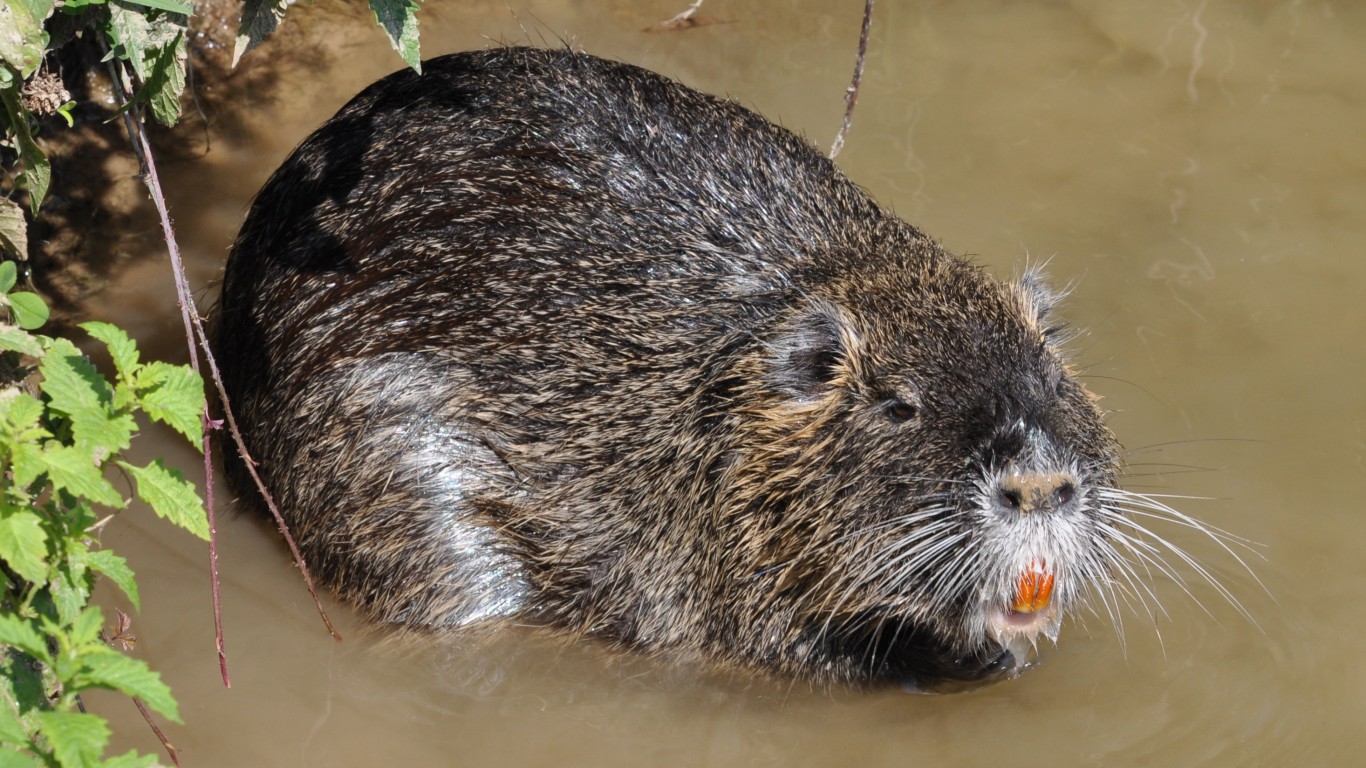
5. Nutria
> Scientific name: Myocastor coypus
> Introduced to U.S.: 1930
> Native to: South America
This beaver-looking, rodent-like creature is wreaking havoc among wetlands in the U.S. Nutria negatively affects the economy in several ways. The burrows and tunnels nutria construct often damage levees that prevent rivers from overflowing as well as man-made canals and ditches. As a result, streambanks erode or become unstable. The species also feasts on the roots of the plants that comprise marsh habitats, which are home to ducks, geese, and muskrats. Finally, and perhaps most destructive to the economy, is its appetite for rice, corn, and sugarcane.
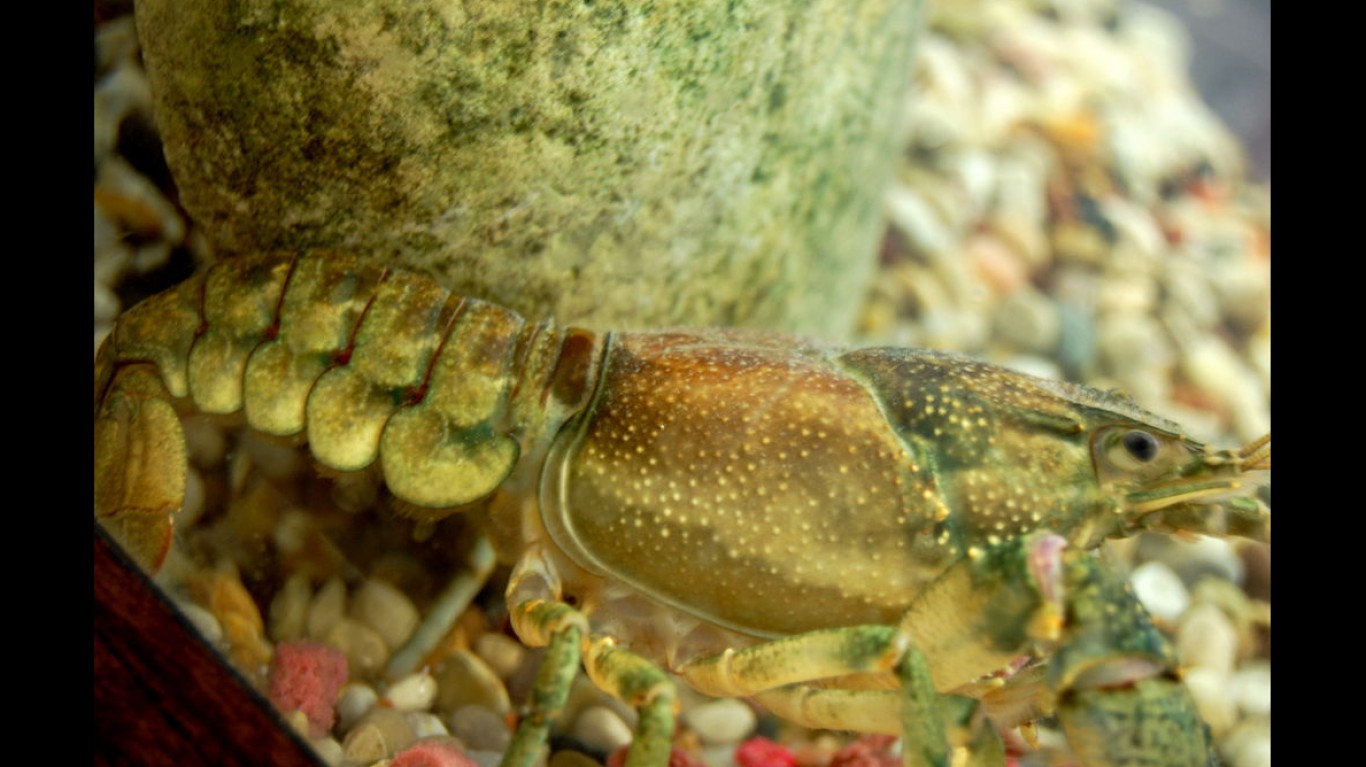
6. Rusty Crayfish
> Scientific name: Orconectes rusticus
> Introduced to U.S.: 1960
> Native to: Ohio River drainage
Rusty crayfish is the exception to this list of non-native species, with origins in Ohio. Today, it has spread to several other states and Ontario. The species is wiping out native crayfish, reducing some populations of fish by eating their eggs, and eliminating the diversity of several aquatic plants.
[in-text-ad]
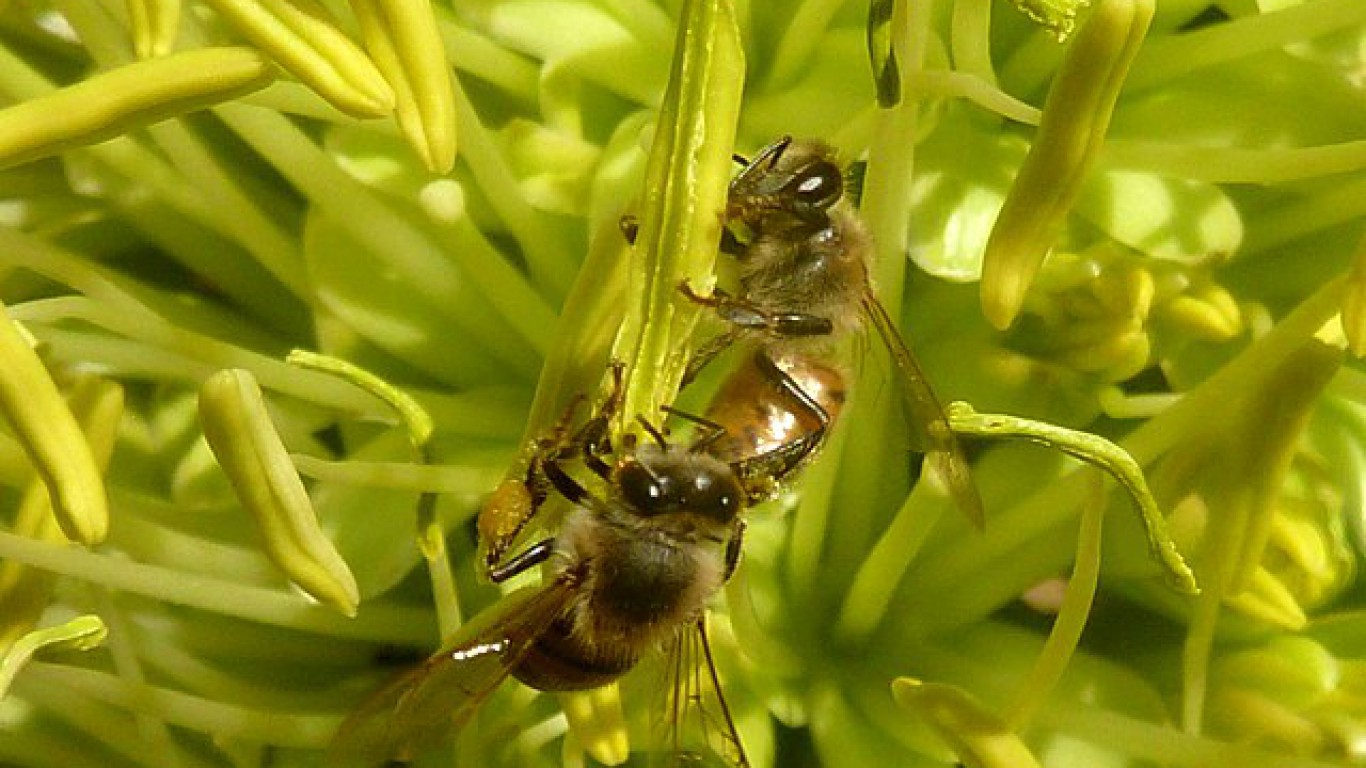
7. Africanized Honey Bee
> Scientific name: Apis mellifera scutellata
> Introduced to U.S.: 1990
> Native to: Originally from Africa; first hybridized in South America
The Africanized honey bee entered the U.S. in 1990 and was first spotted in southern Texas. It was imported and bred with European honey bees in an attempt to increase honey production. However, the aftermath of the species’ introduction was entirely different than what breeders had anticipated. The Africanized honey is an aggressive breed that competes with native honey bees and exploits all of the resources in a given area.
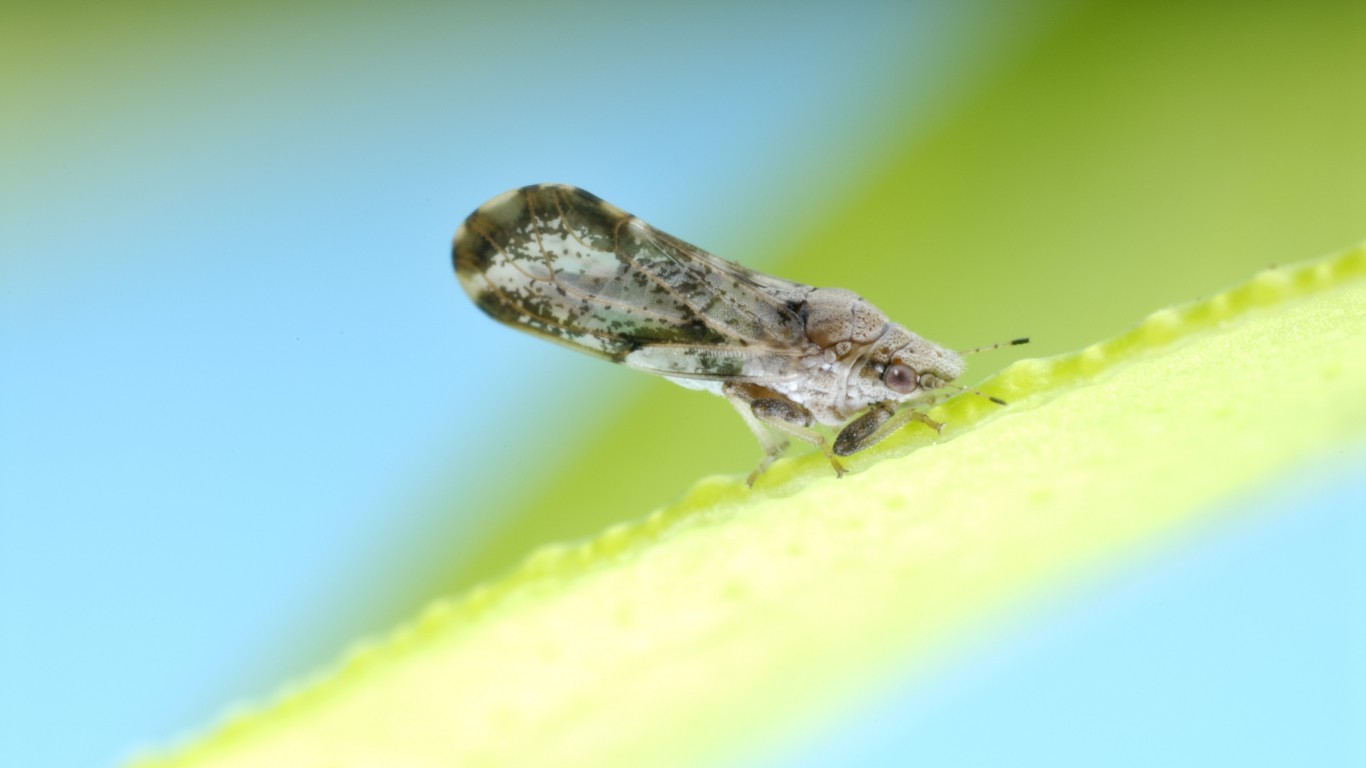
8. Asian Citrus Psyllid
> Scientific name: Diaphorina citri
> Introduced to U.S.: 1998
> Native to: Southern Asia
The Asian citrus psyllid is believed to have entered the U.S. in Florida in 1998 via imported plants from Asia. This invasive species survives by feeding on the sap of citrus tree leaves, and as it feeds, it injects salivary toxins into the plant. The insect often carries Huanglongbing or HLB disease, which infects the tree and causes the citrus fruits to be discolored. The tree ultimately dies after three to five years, reducing the production of oranges.
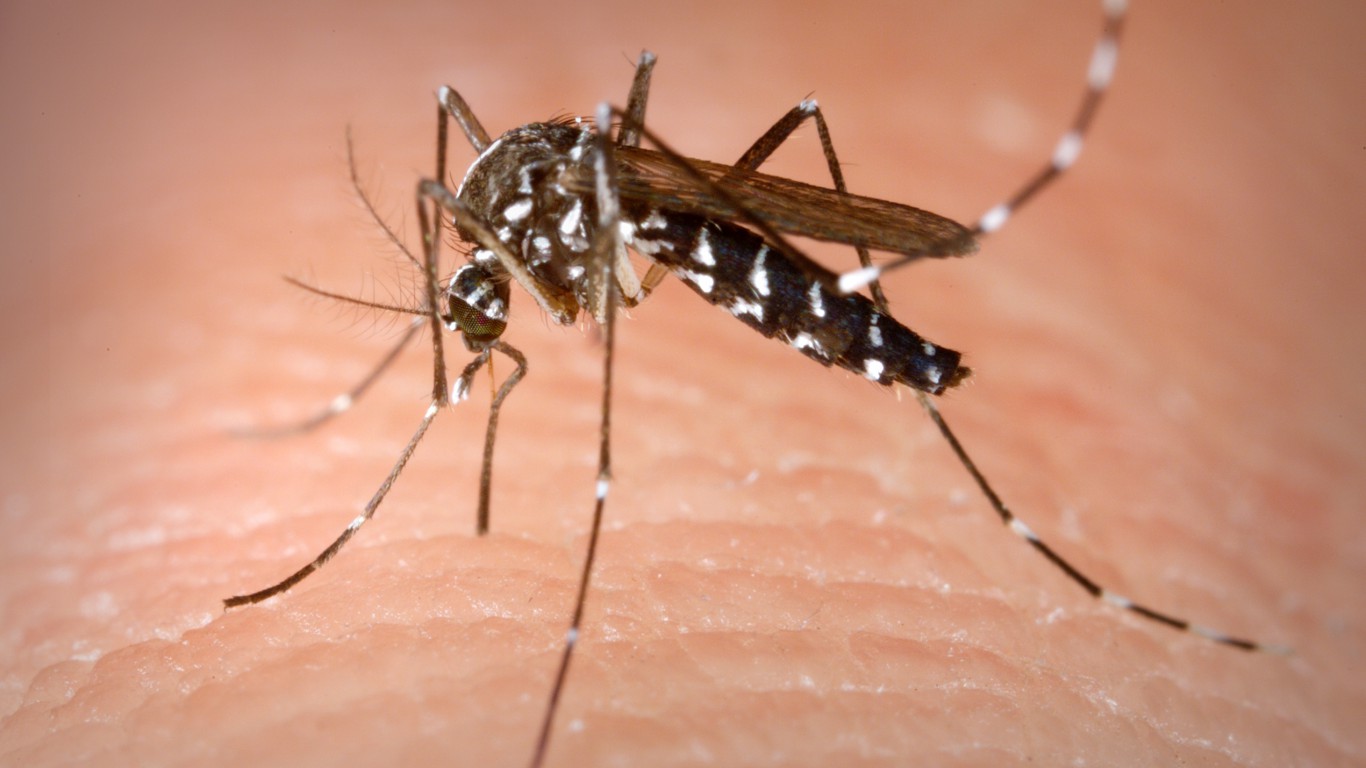
9. Asian Tiger Mosquito
> Scientific name: Aedes albopictus
> Introduced to U.S.: Late 1800s in Hawaii; 1985 in continental U.S.
> Native to: Asia
The Asian tiger mosquito is not your average pesky mosquito. This species is known to transmit deadly diseases, most commonly the West Nile virus, to humans and mammals such as horses. This species first appeared in the U.S. by accident with imported tires from Asia in the 1980s.
[in-text-ad-2]
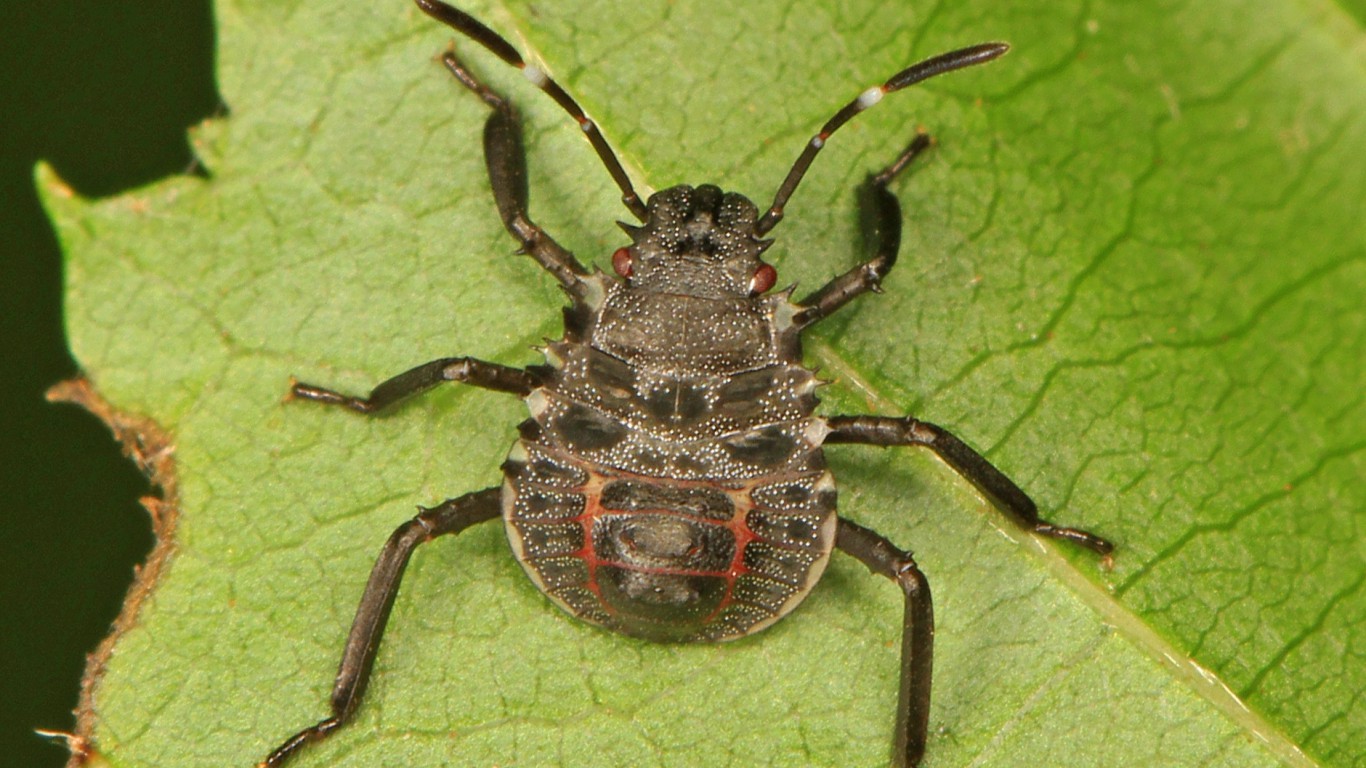
10. Brown Marmorated Stink Bug
> Scientific name: Halyomorpha halys
> Introduced to U.S.: 2001
> Native to: East Asia
The brown marmorated stink bug could have made its way into the U.S. as early as 1996, but its presence was not confirmed until 2001 in Allentown, Pennsylvania. This particular stink bug not only aptly smells bad, but also has the ability to eat its way through a variety of crops, from cotton to apple. Unfortunately for farmers, they are incredibly hard to eradicate. This pest has the ability to avoid pesticides. It eats the crop by injecting a needle into the fruit, which enables it to dodge the chemical on its surface.
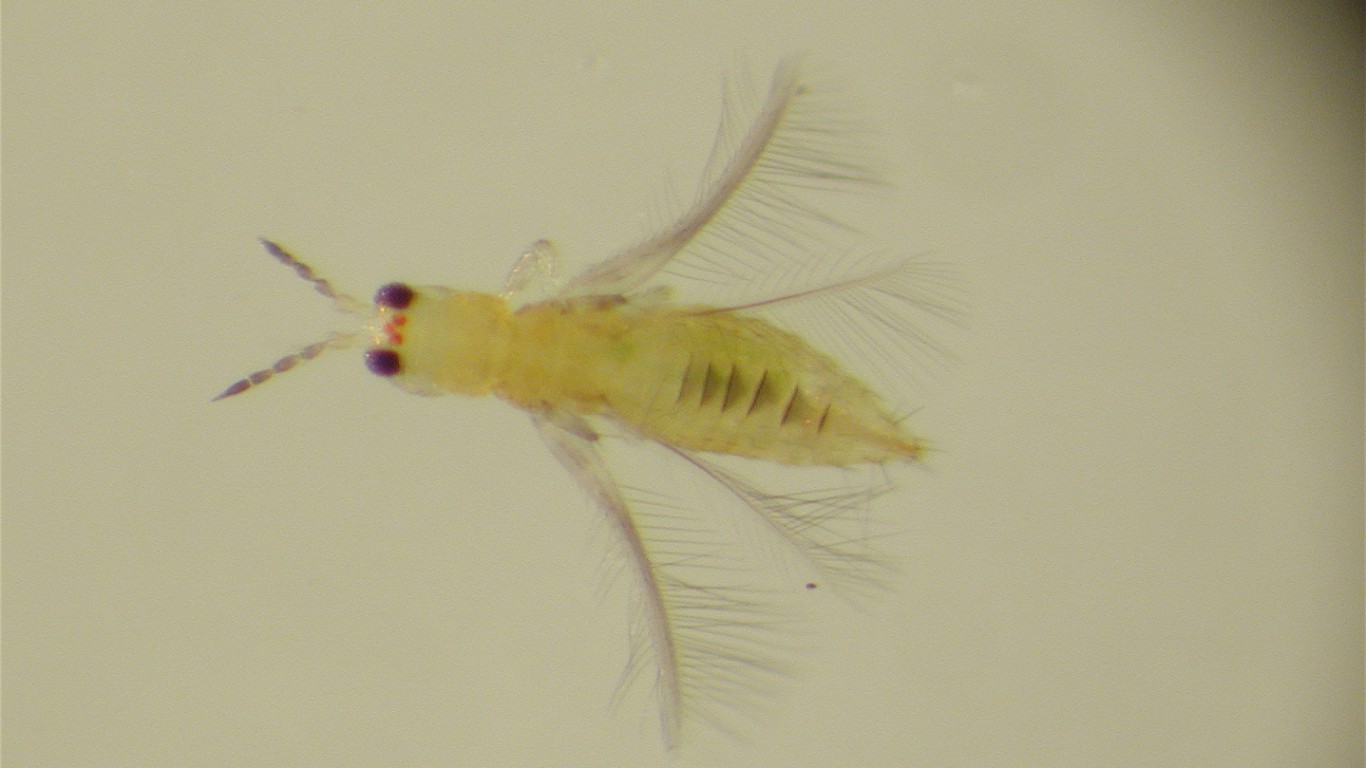
11. Chilli Thrips
> Scientific name: Scirtothrips dorsalis
> Introduced to U.S.: 1987 Hawaii; 2005 in Florida
> Native to: Southeast Asia
Chilli thrips are known to damage over 100 kinds of vegetable, ornamental, and fruit crops in Asia and Australia, particularly peppers, eggplant, tomatoes, and strawberries. The pest damages similar crops in the U.S., causing the plant’s leaves to brown or discolor.
[in-text-ad]
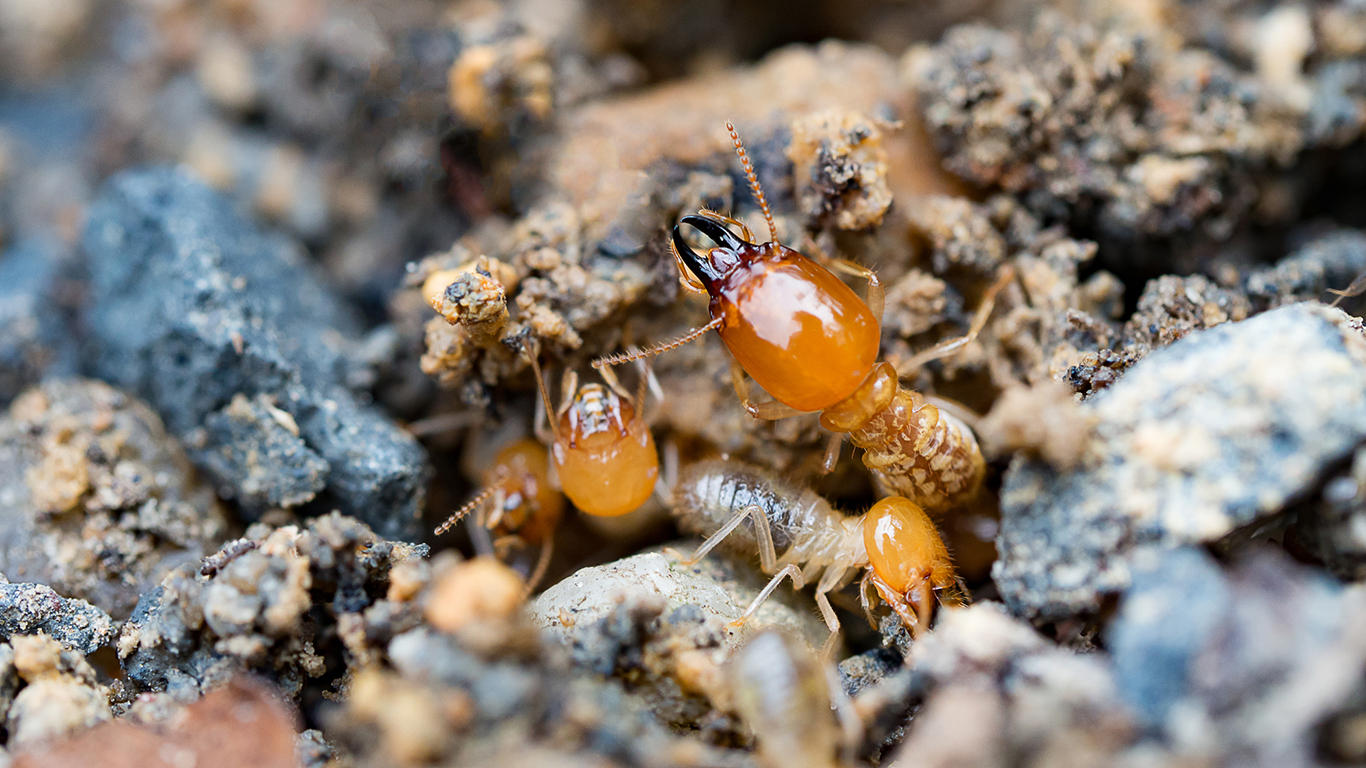
12. Formosan Subterranean Termite
> Scientific name: Coptotermes formosanus
> Introduced to U.S.: 1960
> Native to: China
Often referred to as the super termite, the formosan subterranean termite is one of the most destructive termites in the U.S. This specific species can tear through wood more rapidly than any other species. The termite was likely brought to the U.S. by accident with soldiers returning home from southeast Asia. Today, the termite affects 11 states, mostly in the South.

13. Kudzu Bug
> Scientific name: Megacopta cribraria
> Introduced to U.S.: 2009
> Native to: Asia
The kudzu bug was introduced to the U.S. just nine years ago, with the first bug found in Georgia. This pest is capable of causing severe soybean crop damage, one of the most valuable commercial crops.
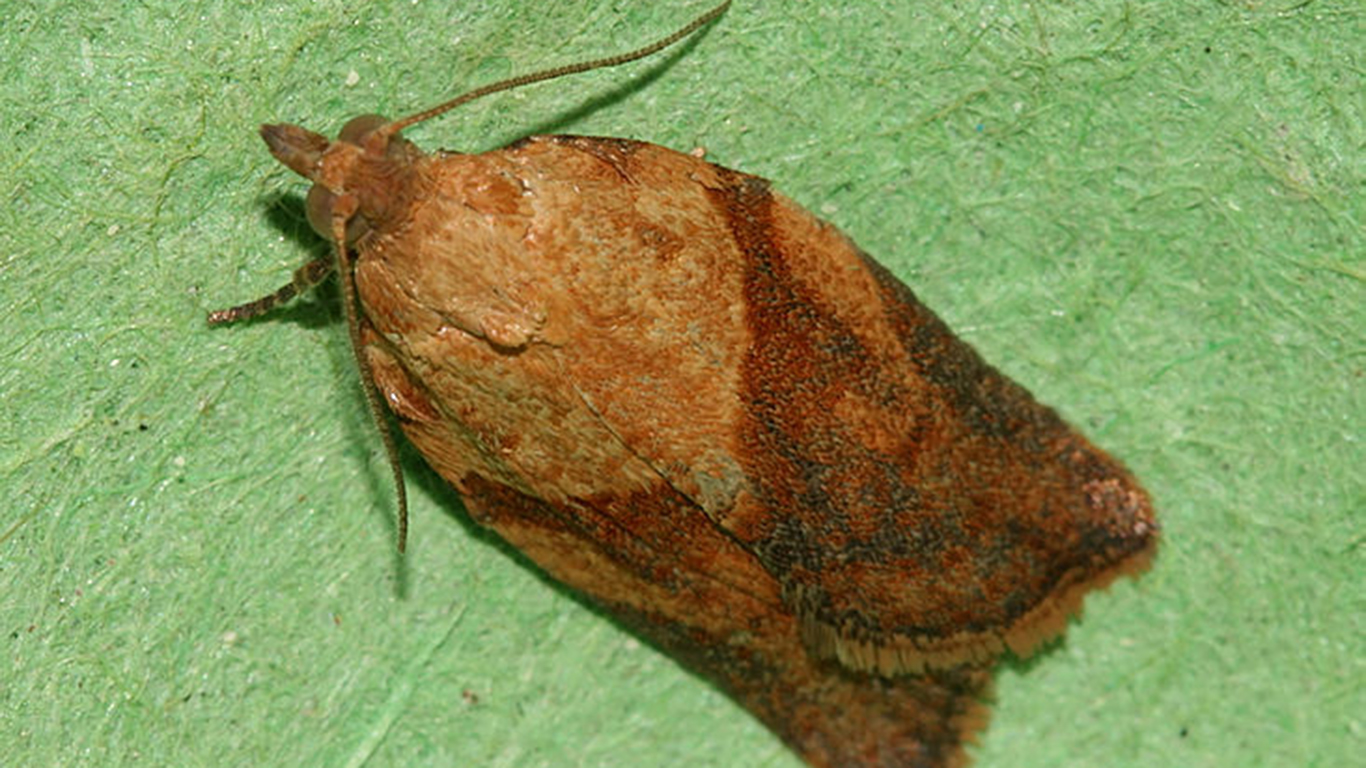
14. Light Brown Apple Moth
> Scientific name: Epiphyas postvittana
> Introduced to U.S.: 1925 in Hawaii, 2006 in California
> Native to: Australia
The light brown apple moth’s delicate appearance may make it seem harmless, but it’s far from it. This moth damages a slew of plants, including roses, chrysanthemums, jasmine, and clover. Originating in Australia, the moth made its debut in the U.S. in California around 2006.
[in-text-ad-2]
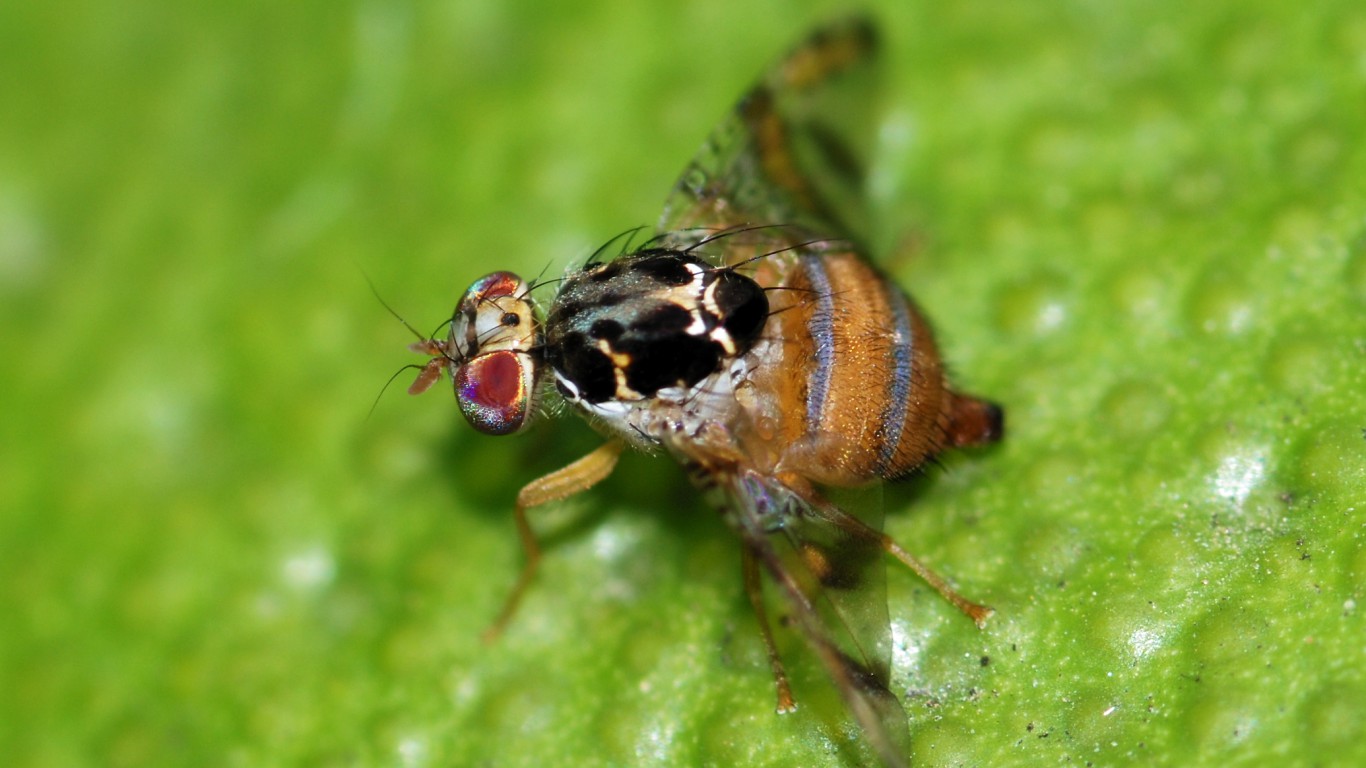
15. Mediterranean Fruit Fly
> Scientific name: Ceratitis capitata
> Introduced to U.S.: 1910 in Hawaii, 1929 in continental U.S.
> Native to: Sub-Saharan Africa
The first infestations of the Mediterranean fruit fly in the continental U.S. were recorded in Florida in 1929. Today, the pest continues to attack a wide range of agricultural crops, including fruit, vegetables, and nuts. This species has a particular fondness for apples, avocados, bell peppers, oranges, melons, peaches, plums, and tomatoes.
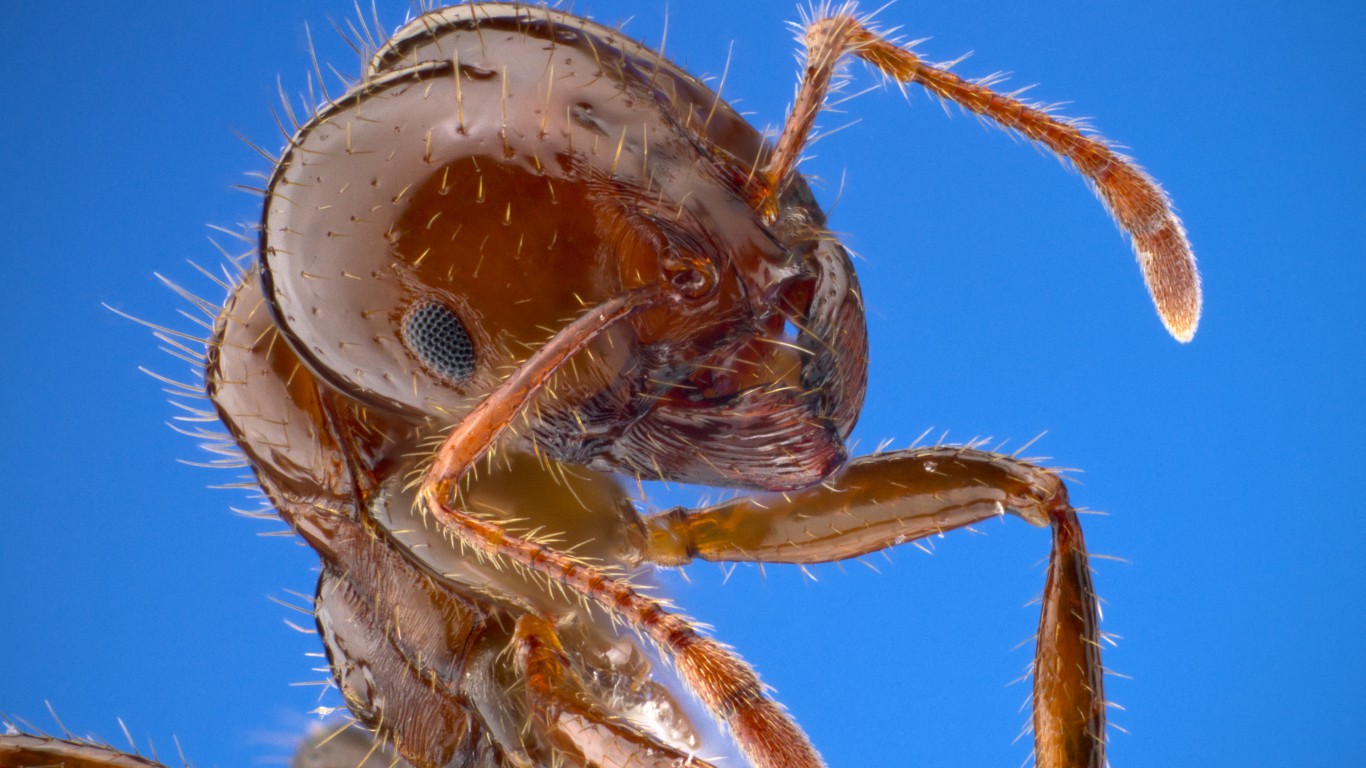
16. Red Imported Fire Ant
> Scientific name: Solenopsis invicta
> Introduced to U.S.: Between 1930-1945
> Native to: South America
Make a trip to Florida and it’s very likely that you will see the red imported fire ant. The critter can sting livestock, pets, and humans. While a sting from this kind of ant will not kill a person, unless they are allergic to the venom, a sting can bring about severe itching and intense pain in some cases.
[in-text-ad]

17. Russian Wheat Aphid
> Scientific name: Diuraphis noxia
> Introduced to U.S.: 1986
> Native to: Eurasia
The Russian wheat aphid is thought to have come to the U.S. with imported wheat to Mexico from South Africa. This small green insect wreaks havoc on wheat and barley. They inject toxins into the plant while they eat, which may stunt the plant’s growth and damage the plant altogether.
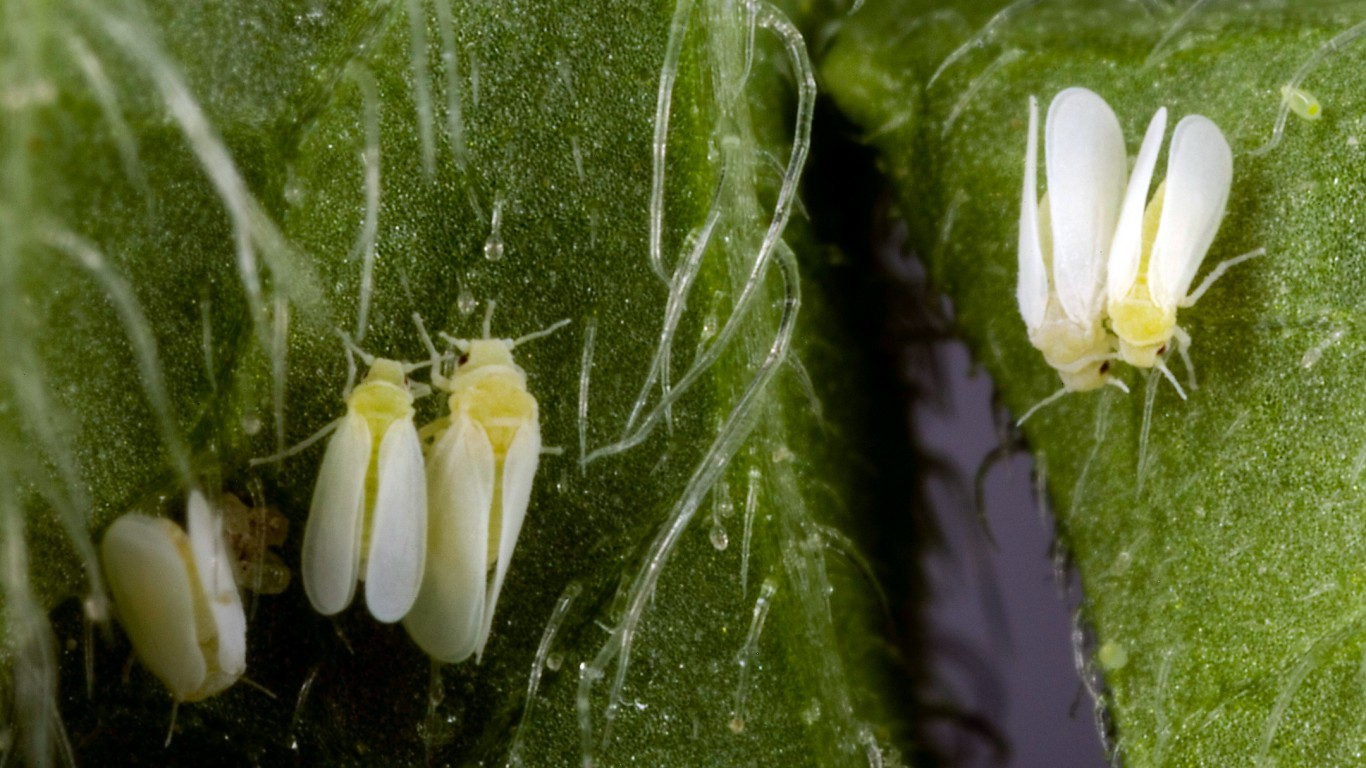
18. Silverleaf Whitefly
> Scientific name: Bemisia tabaci
> Introduced to U.S.: 1897
> Native to: Possibly India or the Middle East
The silverleaf whitefly entered the U.S. as early as 1897, but the more aggressive strand didn’t pop up until nearly 100 years later, in 1986. The pest is actually quite gentle looking with its nearly translucent wings and yellow body. Contrary to its appearance, the insect is extremely detrimental to crops. As it feasts on agricultural goods, they inject viruses into the plant that ultimately cause damage.
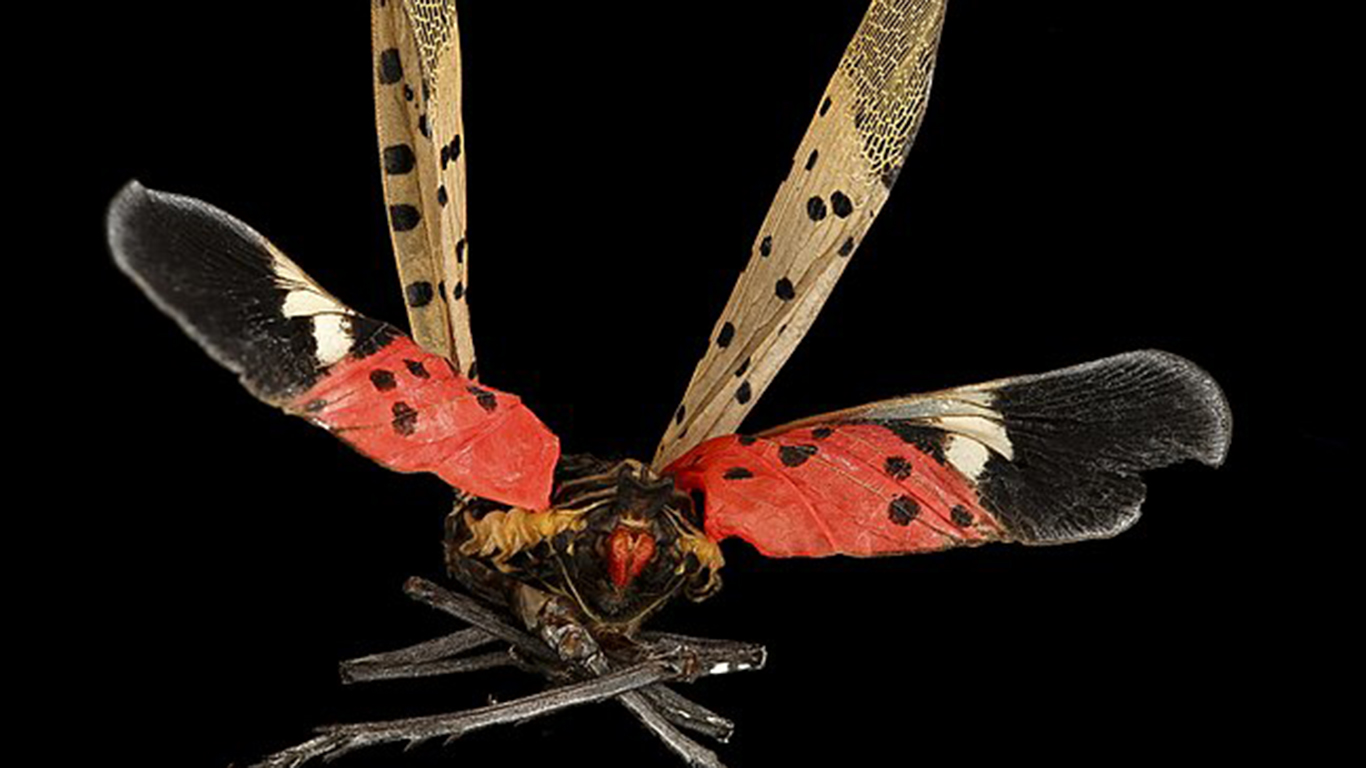
19. Spotted Lanternfly
> Scientific name: Lycorma delicatula
> Introduced to U.S.: 2014
> Native to: China
The spotted lanternfly is a pesky insect that made its debut in the U.S. just four years ago. Hailing from China, it was first spotted in Berks County, Pennsylvania, and has since spread rapidly across several other counties in the east side of the state. The insect poses a severe threat to gardens, orchards, and woodlands. It’s likely the pest entered the country with imported woody plants and other wood products from southeast Asia.
[in-text-ad-2]
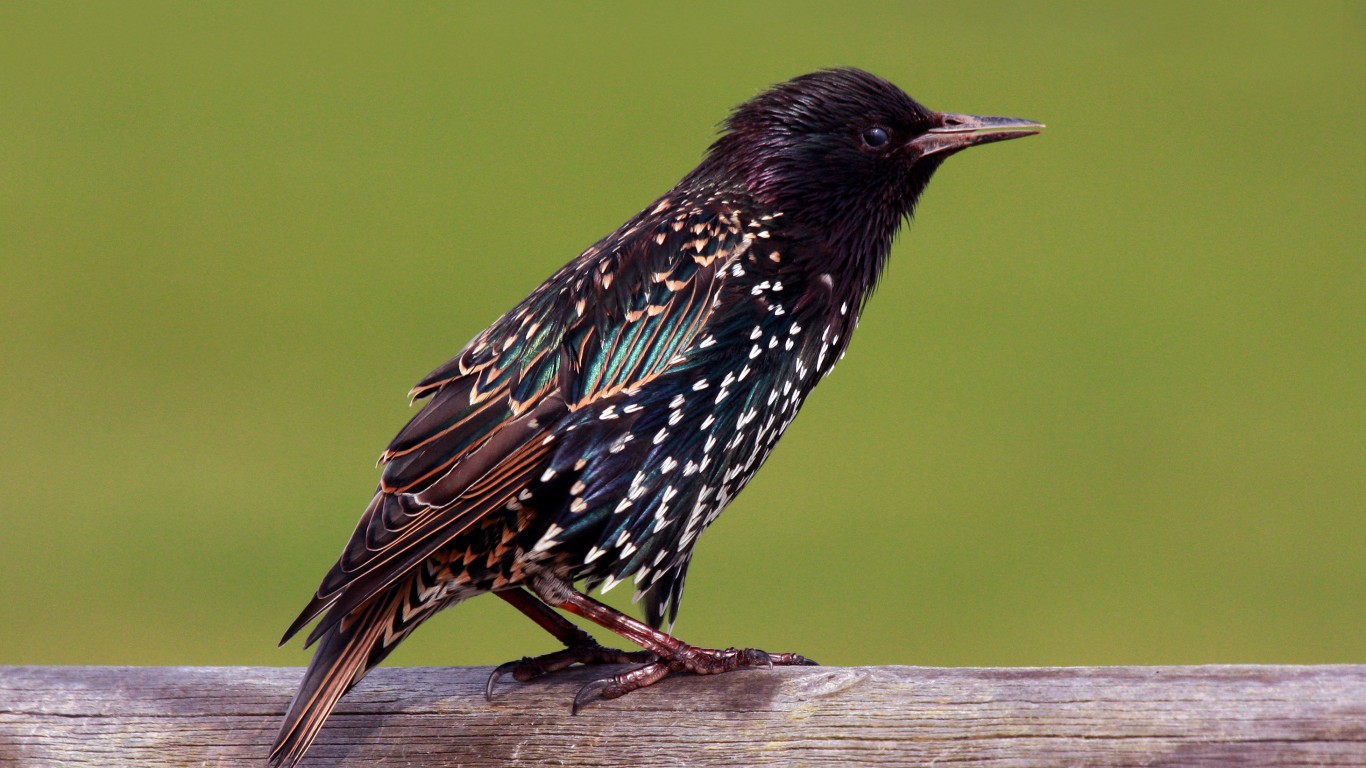
20. European Starling
> Scientific name: Sturnus vulgaris
> Introduced to U.S.: 1890
> Native to: Eurasia
European starlings were intentionally introduced to the U.S. in the late 19th century, specifically to New York City’s Central Park, as part of a plan of introducing birds mentioned in Shakespeare’s plays. The bird has had more than a century to spread to the other side of the country. The bird’s population exceeded 200 million in 2006. These birds pose a huge threat on agricultural crops. They enjoy eating cultivated apples, blueberries, cherries, strawberries, and figs just to name a few. European starlings also are known to pull from the ground grains that are just beginning to sprout and eat the planted seed, which ultimately hinders crop production.
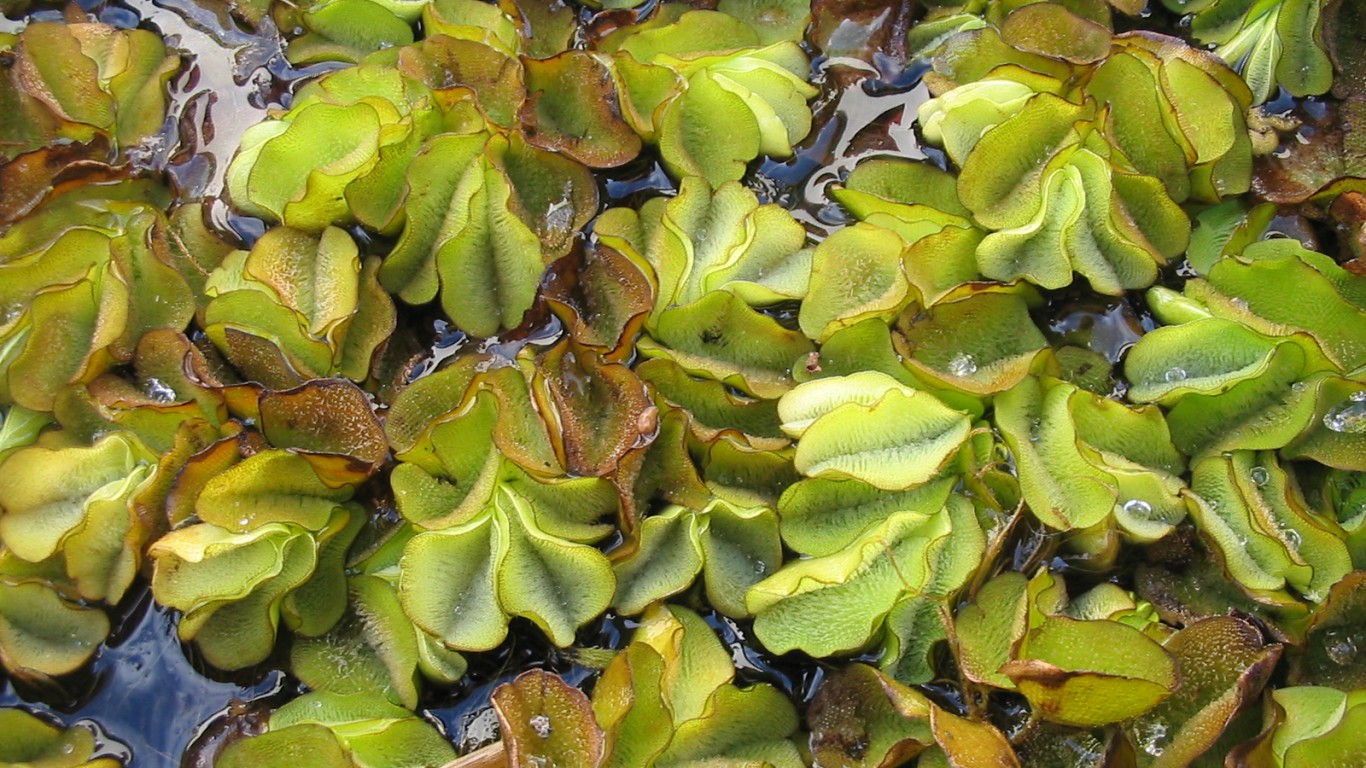
21. Giant Salvinia
> Scientific name: Salvinia molesta
> Introduced to U.S.: 1990
> Native to: Brazil
Giant salvinia made its way into the U.S. via horticultural trade during the 1990s. This particular water fern completely covers the waterways, blocking the passage of sunlight and oxygen vital to native plants, fish, insects, and other species. In addition, the excessive buildup of the fern can take over a body of water, obstructing boating and fishing opportunities.
[in-text-ad]
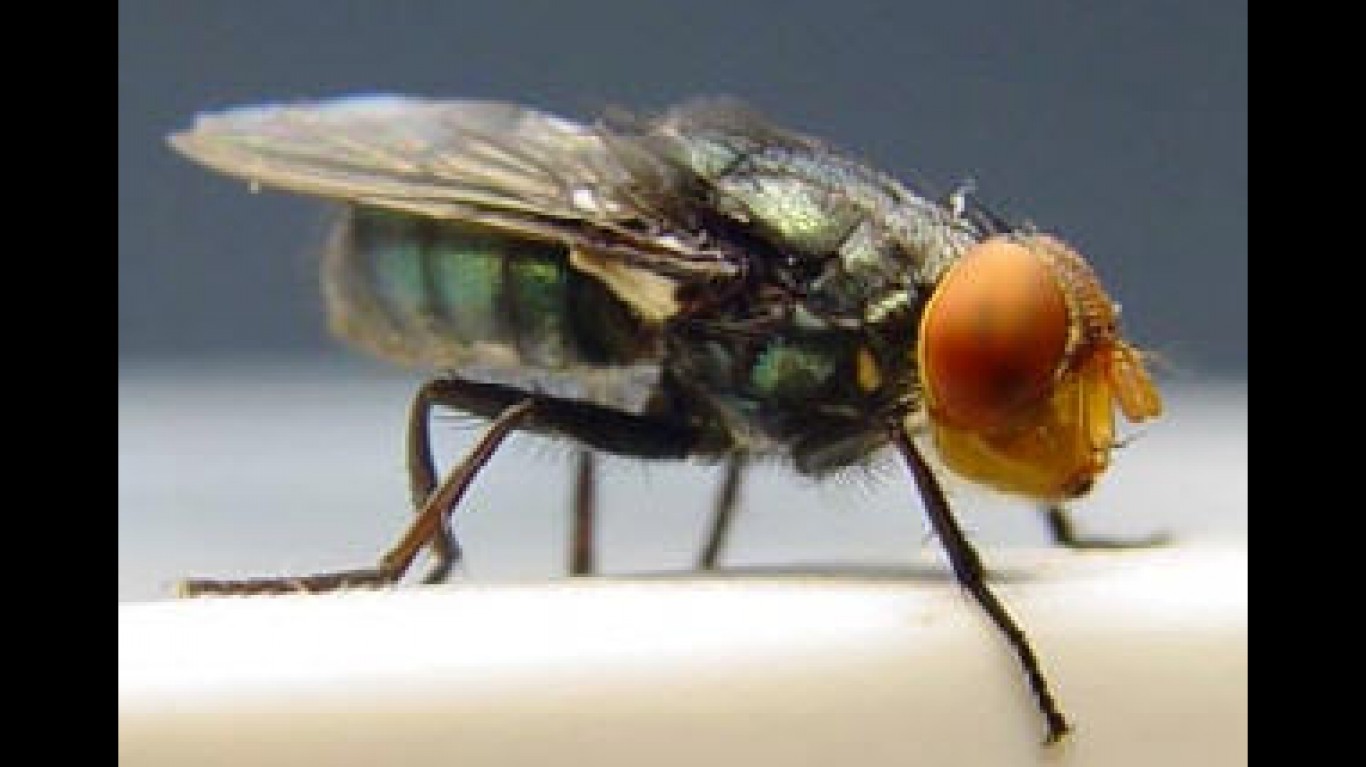
22. Screwworm
> Scientific name: Cochliomyia hominivorax
> Introduced to U.S.: N/A
> Native to: South America and the Caribbean
The New World screwworm had been eradicated from the U.S. back in 1966, however, the pest made a comeback just two years ago. The return of this invasive fly was confirmed on Oct. 3, 2016, when it was found in deer from the National Key Deer Refuge in Big Pine Key, Florida. The fly larvae is very harmful, feeding off the flesh of livestock, especially cattle. In the past century, the parasite has cost the U.S. livestock industry an estimated $20 million a year.
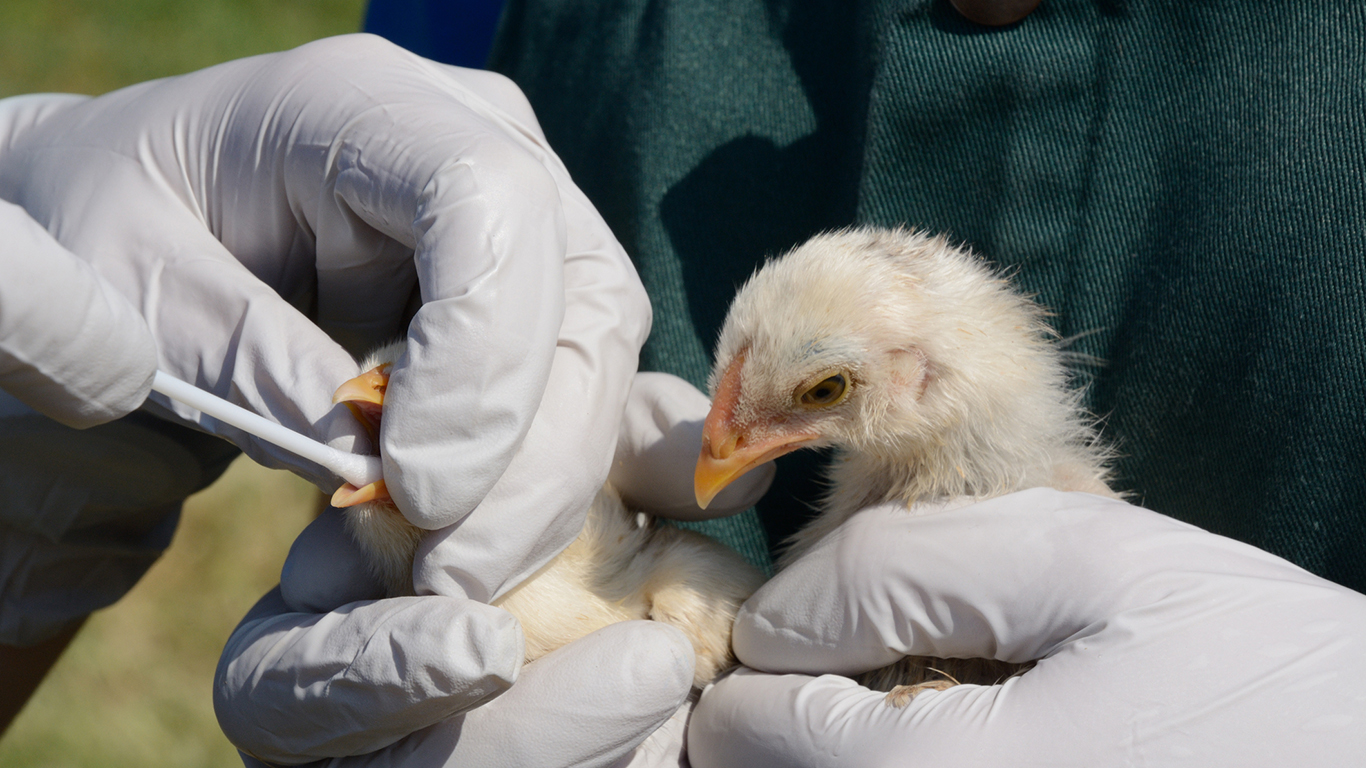
23. Avian Influenza
> Scientific name: Orthomyxoviridae, Influenza Type A
> Introduced to U.S.: 2014
> Native to: Italy
Microbes are considered to be an invasive species, and avian influenza is a pathogen that infects poultry, waterfowls, and some types of mammals. The avian flu outbreak between 2014 and 2015 killed an estimated 50 million birds, costing the U.S. economy between $1 billion and $3.3 billion.

24. Exotic Newcastle Disease
> Scientific name: Paramyxovirus
> Introduced to U.S.: 1970
> Native to: Indonesia
The first outbreak of Exotic Newcastle Disease, an infectious disease that kills poultry, in the U.S. lasted from 1971 to 1974 and cost $56 million to eradicate. The recent outbreak of 2002 and 2003 resulted from illegally imported poultry that spread to commercial poultry. This outbreak cost over $180 million in federal funds to eradicate.
[in-text-ad-2]
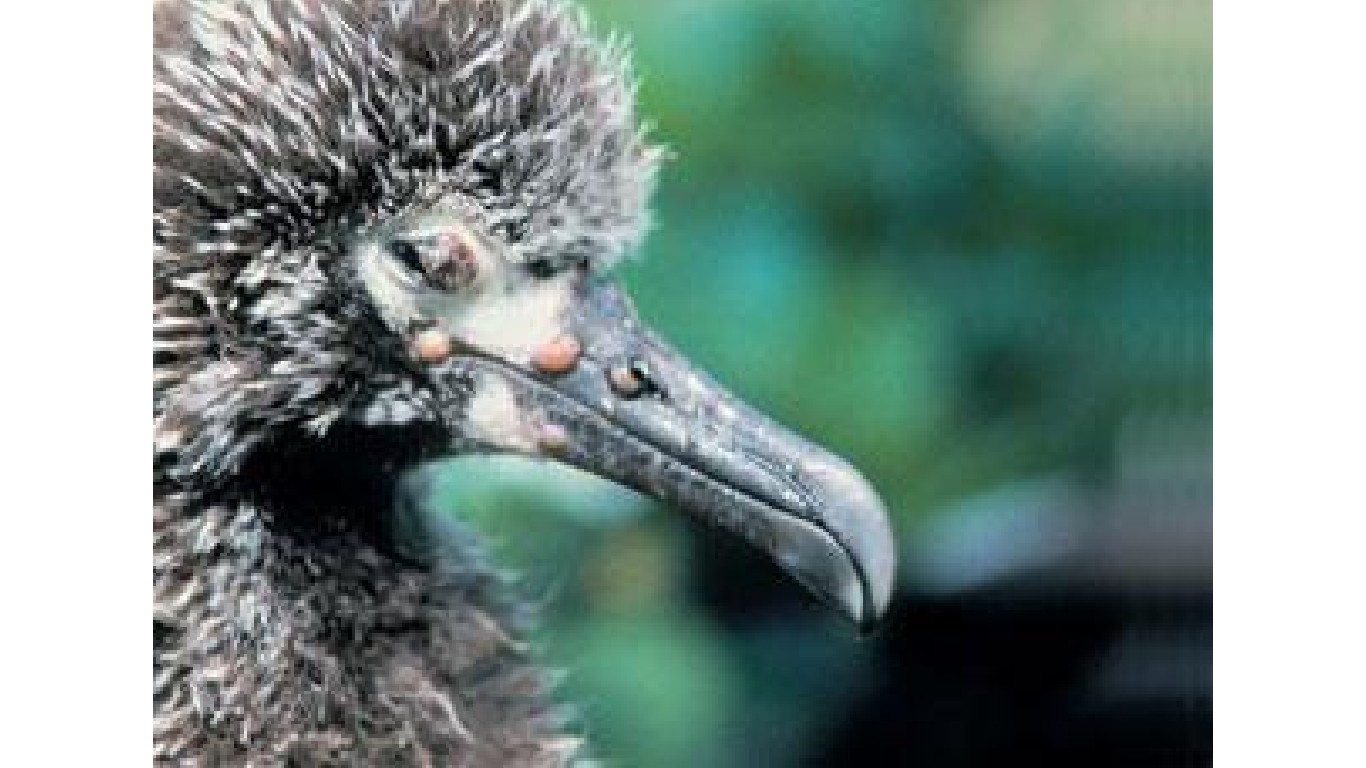
25. Fowlpox
> Scientific name: Avipoxvirus
> Introduced to U.S.: 1902
> Native to: Historically occurred worldwide
The first case of fowlpox, or avian pox, was recorded in Hawaii in 1902. The microbe was likely introduced to Hawaii via imported birds and then spread by mosquitoes. The disease is transmitted by a mosquito that feeds on a bird infected with the virus and then feeds on other birds. Fowlpox currently affects 60 free-living bird species. The host mosquito can cause conjunctivitis in these bird species, which is more commonly known as pink eye.
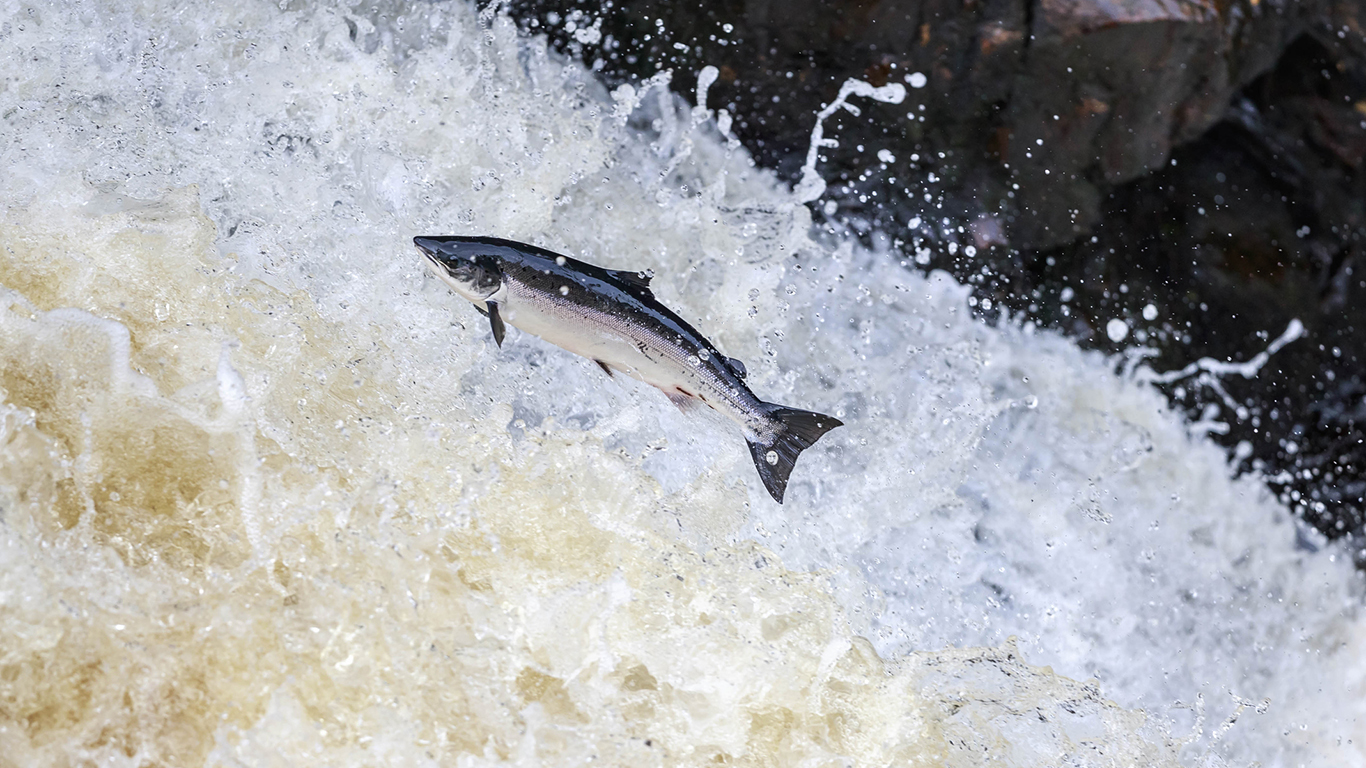
26. Whirling Disease
> Scientific name: Myxobolus cerebralis
> Introduced to U.S.: 1958
> Native to: Eurasia
Whirling disease is a parasitic microbe that infects salmon and trout specifically. The disease gets its name from the whirling swimming behavior of the fish after being infected as the parasite eats away the fish’s cartilage and causes skeletal deformities. Infected fish often cannot eat properly and are more susceptible to predation.
[in-text-ad]
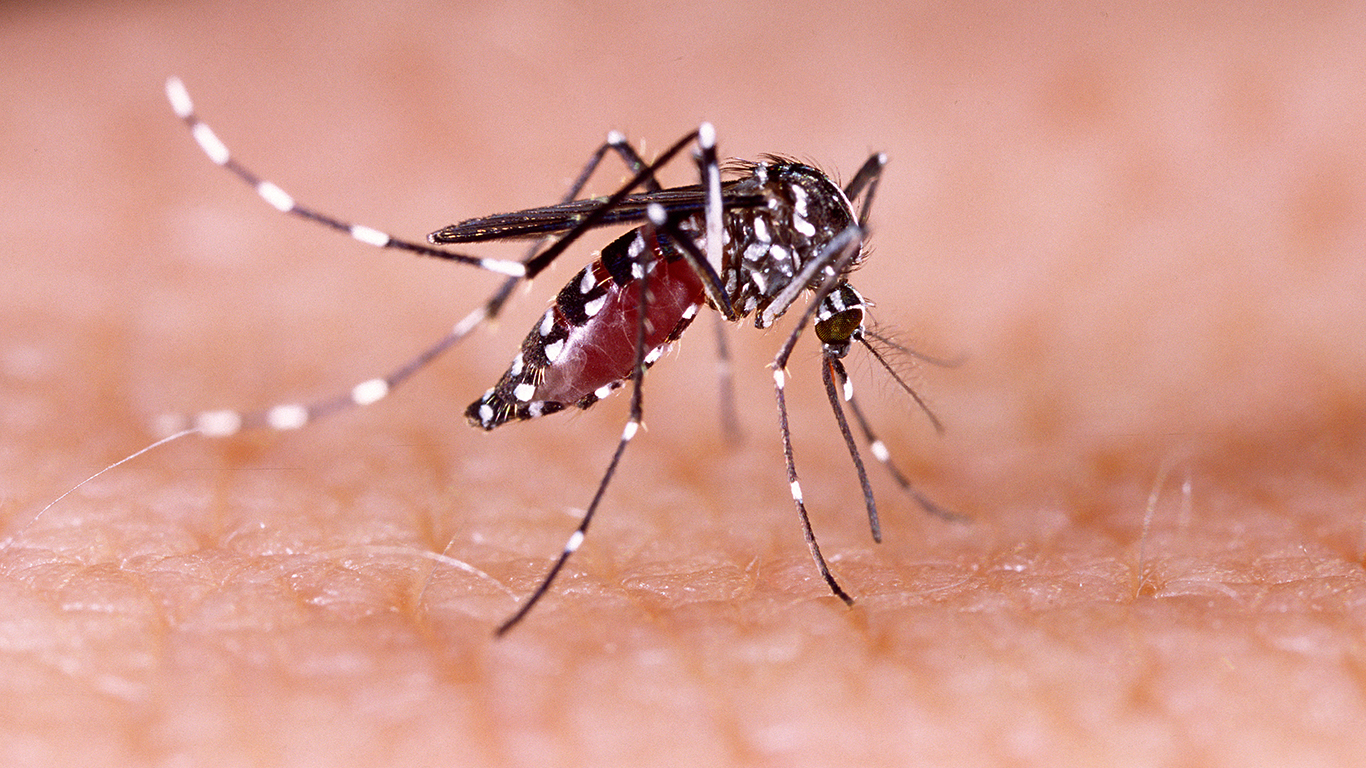
27. Zika Virus Disease
> Scientific name: N/A
> Introduced to U.S.: 2016
> Native to: Africa
A major outbreak of Zika in Brazil in 2015 ahead of the 2016 Summer Olympics affected more than 200,000 people and made headlines worldwide. The virus, which is transmitted by mosquitoes, spread to several other countries, including the U.S., with reports of the virus infecting people in every state.
Researchers found that the virus likely entered the U.S. on at least four separate occasions. It first broke out in Florida in 2016. While the symptoms of Zika are mostly quite mild, for pregnant women there can be potentially severe fetal complications. The virus can cause microcephaly, a birth defect where the baby’s head is far smaller than expected. Depending on the severity, microcephaly can cause developmental delays and seizures among other problems.
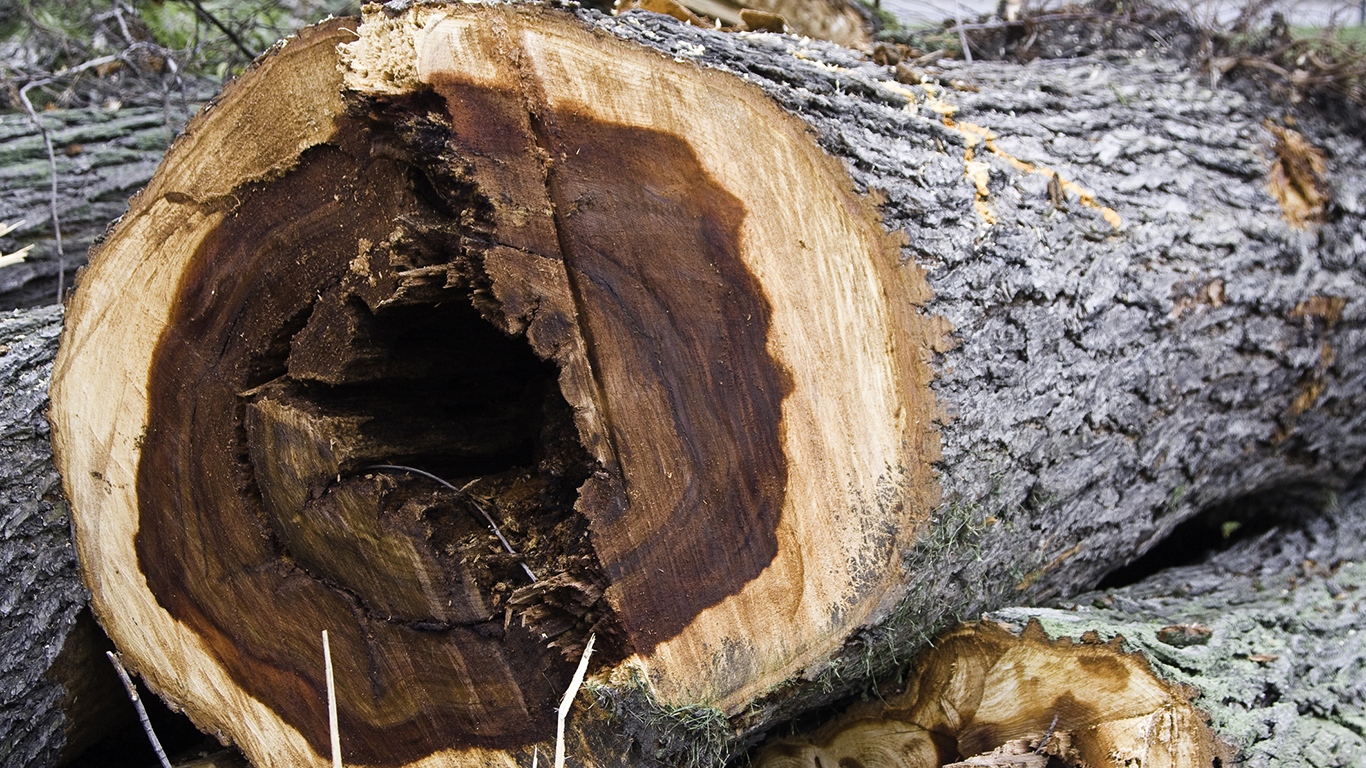
28. Dutch Elm Disease
> Scientific name: Ophiostoma ulmi and Ophiostoma novo-ulmi
> Introduced to U.S.: 1930
> Native to: Unknown, possibly Asia
This fungal disease directly impacts American elm trees. It was accidentally introduced to the U.S. in the 1930s by logs imported from Europe that had been affected by the disease. Cleveland, Ohio, recorded the first case of the fungus destroying American elms in 1930. Just two years after that, the fungus had spread to the East Coast and began wiping out American elms in New Jersey. By 1970, the fungus had killed 77 million trees.
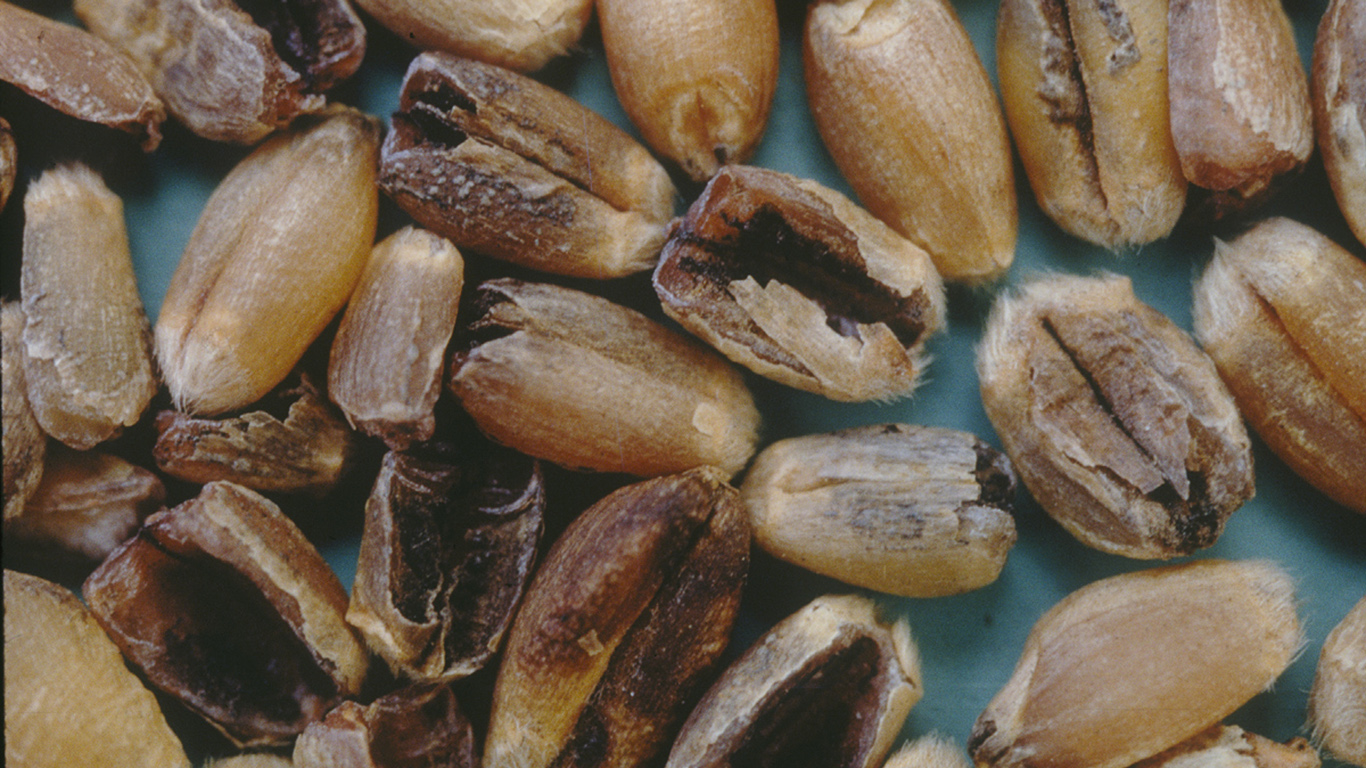
29. Karnal Bunt
> Scientific name: Tilletia indica
> Introduced to U.S.: 1996
> Native to: First discovered in India
Karnal bunt is a fungal disease that infects wheat, ultimately reducing the quality and yield of the crop. Ever since its introduction in the U.S., the fungus has become an issue for wheat exporters. Many of the country’s trading partners will not accept wheat from the U.S. unless it’s certified to have been grown in areas where the disease has not struck.
[in-text-ad-2]
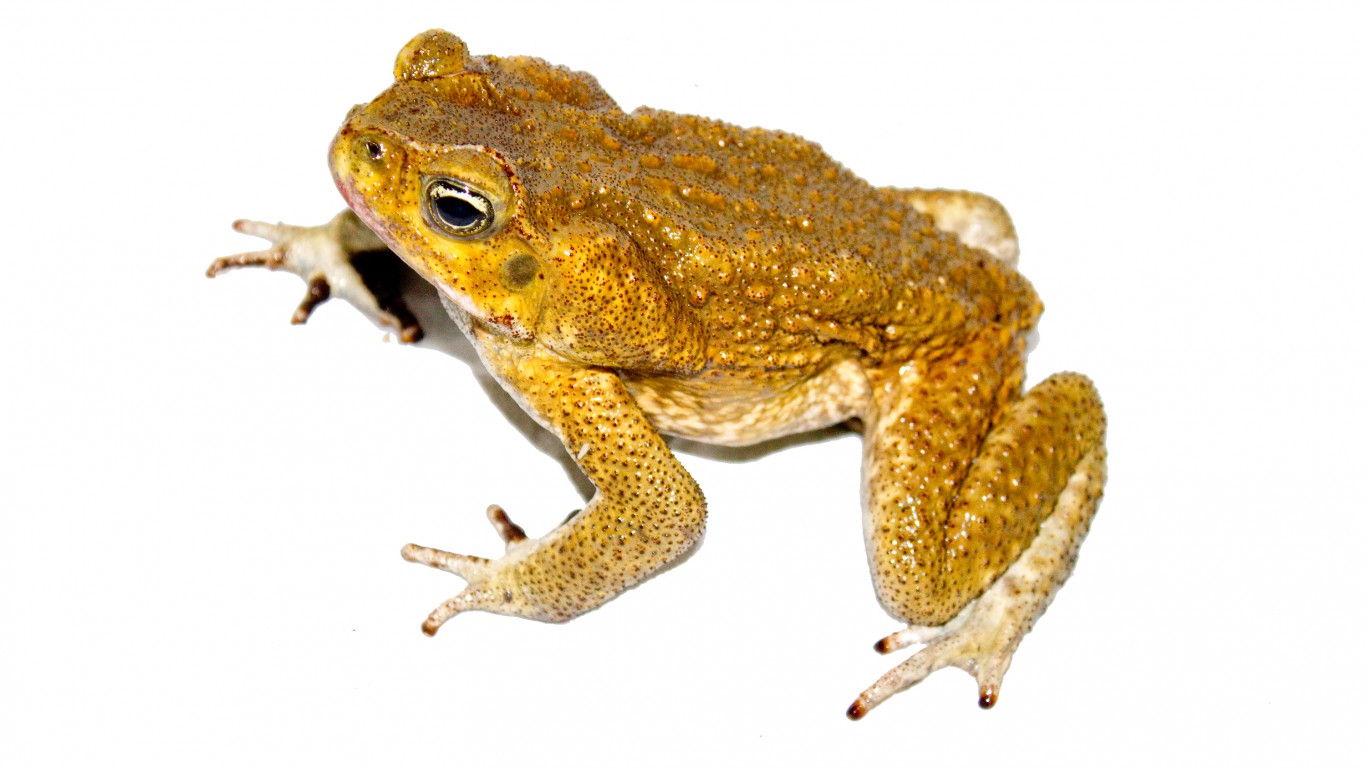
30. Cane Toad
> Scientific name: Rhinella marina
> Introduced to U.S.: 1936
> Native to: South America, Central America, Mexico, and extreme southern Texas
Ironically, the cane toad was introduced to the U.S. in 1936 as a way to fend off agricultural pests in sugar cane fields in Florida. It wasn’t long until the cane toad became a pest itself. While not aggressive, this particular toad’s defense mechanism lies within the glands on its neck and shoulders, which produce a highly toxic chemical called bufotoxin that can kill an animal if ingested. As a result, the cane toad is a threat to several native species and pets.
Are You Still Paying With a Debit Card?
The average American spends $17,274 on debit cards a year, and it’s a HUGE mistake. First, debit cards don’t have the same fraud protections as credit cards. Once your money is gone, it’s gone. But more importantly you can actually get something back from this spending every time you swipe.
Issuers are handing out wild bonuses right now. With some you can earn up to 5% back on every purchase. That’s like getting a 5% discount on everything you buy!
Our top pick is kind of hard to imagine. Not only does it pay up to 5% back, it also includes a $200 cash back reward in the first six months, a 0% intro APR, and…. $0 annual fee. It’s quite literally free money for any one that uses a card regularly. Click here to learn more!
Flywheel Publishing has partnered with CardRatings to provide coverage of credit card products. Flywheel Publishing and CardRatings may receive a commission from card issuers.
Thank you for reading! Have some feedback for us?
Contact the 24/7 Wall St. editorial team.
 24/7 Wall St.
24/7 Wall St.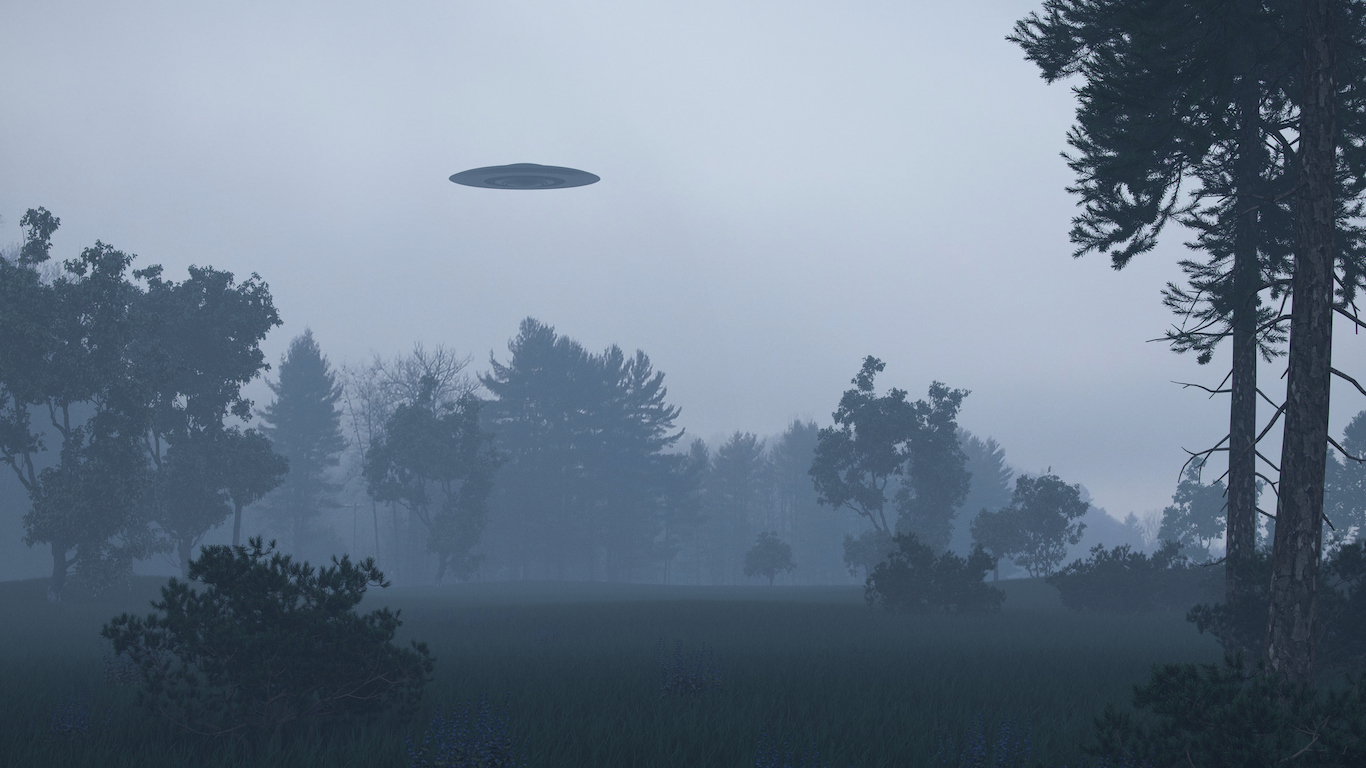 24/7 Wall St.
24/7 Wall St. 24/7 Wall St.
24/7 Wall St. 24/7 Wall St.
24/7 Wall St.
